I: Books, Art, Prints, & Posters, Used, First Edition (Over 183,000 results)
Product Type Clear
- All Product Types
- Books (183,059)
- Magazines & Periodicals (1,838)
- Comics (198)
- Sheet Music (406)
- Art, Prints & Posters (359)
- Photographs (37)
- Maps (57)
-
Manuscripts &
Paper Collectibles (225)
Condition
Binding
Collectible Attributes
- First Edition
- Signed (16,168)
- Dust Jacket (53,208)
- Seller-Supplied Images (92,821)
- Not Printed On Demand (183,386)
Free Shipping
Seller Location
Seller Rating
-
LES FACHEUX COMEDIE, DE I. B. P. MOLIERE. REPRESENTEE sur le Theatre du Palais Royal.
Seller: Librairie de l'Univers, Lausanne, Switzerland
First Edition
Paris: Jean Guignard, 1662. In-12: 9 x 14 cm, 1 f. de titre, 5 ff. d épître au roi en gros caractères, 1 f. d introduction hors pagination, [76] pp. d introduction, prologue, liste des acteurs et texte, saut de pagination de 10 à 13, dernière page, pour le ballet du IIIème acte, chiff. 52, 1 f. de privilège. Inscription manuscrit sur la page de titre : «Iere à Paris le vend. 4 nov. 1661». Édition originale, avec le privilège daté du 5 février 1662 et l achevé d imprimer du 18 février 1662. Le privilège de l édition a été partagé entre De Luyne, De Sercy, Guignard, Barbin et Guinet. Reliure postérieure en chagrin rouge. Dos à cinq nerfs avec titre et date en capitales dorées et caissons ornés aux petits fers. Trois filets en encadrement des plats. Un filet aux coupes. Dentelles aux chasses. Gardes recouvertes de papier marbré. Toutes tranches dorées. Ex-libris: Jules Lemaître. Ex-libris: André Gutzwiller. Mouillure au plat inf. Papier parfaitement propre. «Cette comédie-ballet fut représentée la première fois le 17 août 1661 à Vaux-le-Vicomte dans le château du Surintendant Fouquet, en présence du Roi Louis XIV [ ]. Le Succès de la pièce fut très vif» (Guibert, I, p. 76). «L irrégularité de la pagination, dans cette première édition, permet de supposer des tâtonnements et des remaniements, imposés par les circonstances, après la disgrâce de Fouquet.» (Lacroix). La Préface et le Prologue devaient peut être aussi faire allusion à Fouquet. Mais la disgrâce du Surintendant étant survenue brusquement trois semaines après la représentation, Molière dut attendre avant de se décider à prendre son privilège et faire imprimer la pièce. (Guibert, I, p. 77). Véritable originale de la première comédie-ballet de Molière, grande de toutes ses marges, témoin d une épopée éditoriale digne du maître de la comédie. Réf. Guibert, I, pp. 74-78 / Lacroix, no 7 / Tchemerzine, VIII, p. 302.
-
L'Art Islamique en Orient. TWO PARTS I & II.
Published by M. Schulz, Prague, 1923
Seller: FOLIOS LIMITED, Witney, United Kingdom
Book First Edition
Hardcover. Condition: Good. First Edition. 49 x 33.5 cm. approx. Premiere Partie: Vieilles Faiences Turques en Asie-Mineure et a Constantinople,avec introduction et descriptions explicatives par Charles Wulzinger: 27 pp. including a bibliography + 40 colour plates (of which 4 are double-page), cloth backed decorative board, cover slightly soiled & rubbed at corners, new spine / Part II: 11 pp. [1], 11 pp, chromolithograph title page and leaf of dedication, 52 loose plates numbered 1-60, of which 9 on double page, numerous figures in text, original cover tipped-in on front & loer cover, decorative boards chromolithographed in green and gold, biblio, book plate of Comte Chandron de Briailles verso front endpaper, cover slightly rubbed round edges, otherwise a beautiful set published 1923-1924. First edition of both parts, complete and not listed thus in library catalogues. Until recently auction records used to consider the first part as being lost. A Part one edition was first located and listed by Librairie Soustiel, Paris. It illustrate numerous samples of Islamic ceramics and their different decoration, ornament and colour. A very attractive set illustrated with finely chromolithographed selection of plates. The second part depict Islamic architecture and architectural details drawn from numerous mosques including Konia, Brousse, Sivas, Constantinople, Yenicheir, and Iznik. It also depict Islamic calligraphy, domes on two spread sheets, doors, windows, wood carvings, and ornaments. Bibliographic References for part II only as follows: Atabey 1015; Creswell 445; not in Blackmer. #22477.
-
Libro De Horas De Juana I De Castilla,Juana La Loca
Published by Moleiro, Barcelona, 2005
Seller: Luigi De Bei, PREGANZIOL, TV, Italy
Book First Edition
Cloth - 2 vols. Condition: As New. Dust Jacket Condition: As New. Edition originale. Libro de Horas de Juana I de Castilla,Juana la Loca Facsimile e commentario del codice conservato alla British Library Segnatura : Add.Ms.35313 Miniatura Fiamminga circa 1500 Miniaturisti Gerard Horenbout e Simon Bening -482 pagine con 75 miniature a piena pagina Tiratura 987 esemplari numerati Commentario studio monografico con ills. a colori l'insieme Euro 9200,00.- Size: 237 x 168 Mm.
-
THE CARPET-BAG WEEKLY (NEWSPAPER/MAGAZINE) , VOLUME I, NO. 44-52 & VOLUME II, NO. 1-46, INCLUDING THE DANDY FRIGHTENING THE SQUATTER For the Amusement of the Reader
Publication Date: 1852
Seller: Sage Rare & Collectible Books, IOBA, Livonia, MI, U.S.A.
Association Member: IOBA
First Edition
Hardcover. Condition: Fair. First Edition. ; Contains the very first national appearance of the writing of Samuel Langhorne Clemens (Mark Twain). "The Dandy Frightening the Squatter" with the byline S. L. C. In Volume II, No. 5. It's a humorous short article and is quite rare. This bound collection is lacking the cover but still bound together. The first few pages are loose with soiling and tattered edges. Beyond the first few pages, the pages are toned with some soiling but in good condition.
-
Lahde, (1806 - ca. 1814) + (ca. 1818-20 for the final three plates). Small folio (binding: 31,7 x 20,6 cm). Bound in an elegant pastiche half calf by Anker Kyster, with lovely gilt spine, old marbled paper boards and beautiful hand-made patterned end-papers. Bound with four of the exceedingly scarce title-pages/front wrappers for issues one, one/two three, and five, stating which plates were in the issue in question. Complete with all 34 magnificent engraved plates of costumes, all on large, good paper and in exquisite, precise original handcolouring. Most of the leaves measure 31 x 20,2 cm, one (En Brand Officer) measures 28x19,5. At the end are withbound the three final plates that were issued a bit later, with the complete ediiton of 1820. Thus making the final plate count 37. The three final plates all measure 28x20 cm. The two first plates have been neatly restored at upper right corner, far from affecting image. Otherwise, the copy is in magnificent condition. With the ex-libris of Oskar Davidsen to verso of front free end-paper. The exceedingly scarce first edition of Senn and Lahde?s (with the possible collaboration of Eckersberg) magnificent ?Klædedragter i Kjøbenhavn? (Costumes in Copenhagen), which is the first work devoted to costumes of the Danish capital and thus of seminal historical importance to the understanding of Copenhagen folklore at the brink of the golden age. The magnificent plates are of unusually high quality and differ from those of other works of this kind in being more artistically ambitious. The plates show attempts at depicting action and movement and portraying a certain situation. They are much less stiff than other costume plates of the period, and the features of the persons in the pictures show an intentional individualization. In short, they are much more closely related to the genre painting than would be expected. This highly important and extensive collection of Copenhagen costumes was made in Denmark, by foreigners and with an international aim. The Swiss painter and engraver Johannes Senn (1780-1861) spent 15 years in Denmark, from 1804 till 1819, and the German-born Gerhard Ludvig Lahde (1765-1833) came to Copenhagen in 1787 in order to attend the Art Academy and later became a Danish citizen. The two artists find themselves at the beginning of a period, in which national feeling, the strengthened sense of nationality, and a romantic view of nature are rapidly growing a period in which the interest in ?common? man and the people of a nation are becoming the centre of attention. Out of this grows the need to represent the people, the ?real? population, to the rest of the world and to claim a specific sense of what it is to be, in this case, a Copenhagener. ?Klædedragter i Kjøbenhavn? began appearing in 1806, and we know that by 1810, three issues with six plates in each (i.e. 18 plates) had appeared. The following three issues appeared shortly after, though not all containing six plates (the fifth issue, as is evident from the exceedingly scarce title/wrapper bound in the present copy, only contained four plates), amounting to 34 plates in all. These plates later appeared in Lahde?s ?Elementarværk I Tegnekunsten (1817-18), and a selection of 12 plates were issued separately under the title ?Karakteristiske Figurer eller Det daglige Liv i Hovedstaden? (1812). A further three plates were issued later (these three plates have been added to the present copy), and in 1820, all 37 plates appeared together. In 1830, the work appeared again, this time with 35 plates, under the title ?Kjøbenhavns Klædedragter eller Det Daglige Liv i Hovedstaden? Provenance: Oskar Davidsen, one of the most significant Danish book collectors, whose collection included virtually all illuminated and coloured Danish books. (Colas: 1721 for the later edition, not having the original).
-
Sorøe, Jonas Lindgrens, 1772. 4to (260 x 214 mm). 2 volumes, uniformly bound in two nice contemporary half calf bindings with five raised bands and gilt title- and tome-labels to spines. Ex-libris (Hjalmar Hartmann) pasted on to pasted down front end-paper in both volumes. Previous owner's stamp (Hvedholm Castle) to upper part of title-page in both volumes and two small paper-labels (stating respectively 1592 and 1593 - indicating the booknumber in Hvedholm Castle's catalogue) to lower compartment on spines. A few leaves in vol. 1 with brown stripe in upper margin. An excellent and wide-margined copy. (12), 618 pp. Pp. (2), 519-1042, (62), 20, (2) + 51 engraved plates (numered I-L, with 2 plates numbered XXX) and 1 large folded map. First edition of Olafsson?s landmark work, which is considered the foundation for all later researches on Iceland. The authors travelled around Iceland between the years 1752 and 1757 describing the geology, geography, zoology, botany, archaeology, mineralogy, etc. as well as the economic conditions - an expedition initiated by the Royal Danish Society. ?His account is characterized by a certain independence from external references or foreign images he points out differences and yet confers equal value. This emancipation from a world view that exalts uniformity and homogeneity rather than difference and alterity is demonstrated in the auto references Eggert uses. Instead of continuously comparing Iceland to Denmark or other ?civilized? cultures, he compares one part of the island with another Icelandic region or the Icelandic status quo with the situation in the past.? (Schaer, From Hell to Homeland, Eggert Olafsson?s Reise igiennem Island and the Construction of Icelandic Identity). Unlike earlier travel accounts, Eggert structures his description in accordance with his actual travels. Thus, he does not give general statements about the land or the people, but he divides his work into four chapters which correspond to the four districts of the country and treats them according to his travels. The survey is generally characterized by a wish to note everything remarkable and does not discriminate between strange and easily-explainable phenomena.?In his detailed description of a natural environment profoundly different from the European one, Eggert does not in any way deny or dismiss the immense effect Icelandic nature must have had on the foreign visitor. But he discovers that discussion of hetero stereotypes, rather than adoption of these foreign views, is necessary to create an auto image. When examining the Icelandic glaciers on behalf of the Danish Academy of Sciences, he does not underestimate the impression these glaciers would have on a foreign spectator. He explicitly states that somebody who sees them for the first time in their life must be more impressed than the native Icelander. The intimidating effect of Icelandic nature thus becomes an attribute dependent on the recipient?s cultural background. Finally, Eggert states that one ?does not need the poetic terms of speech of the older days to imagine those effects of nature.? (ibid., p. 101) It is neither necessary to stress the Icelandic nature?s intimidating and terrifying aspect nor to defend the glaciers variance from European or Danish nature by declaring them something more valuable, or even supernatural.? (Schaer, From Hell to Homeland, Eggert Olafsson?s Reise igiennem Island and the Construction of Icelandic Identity). In Iceland, Eggert Ólafsson is also known for his moralist poems, some of which even today enjoy considerable popularity, and he is still considered one of the earliest founders of Icelandic nationalism. The work was later translated into German, French and English. An appendix on Icelandic plants (Flora Islandica) by Johan Zoega is at the end of vol. II.Fiske I 439.Klose 598.Biblioteca Danica III, 613.Regarding the map see Hermansson: The Carthography of Iceland p. 53.
-
Claudii Galeni Opera omnia Volumen I - XX. (= Medicorum Graecorum opera quae exstant).
Published by Lipsiae [ Leipzig], Cnobloch, 1821-1833., 1833
First Edition
Hardcover. 8°. 22 uniforme Pappbände der Zeit mit goldgeprägten Rückentiteln auf je 2 farbigen Rückenschilden. Die Einbände etwas berieben und bestoßen. An den Aussengelenken, Kapitalen und Ecken etwas mehr. Mit kleineren Fehlstellen im Bezugspapier. Ordentlich ausgeschiedenes Exemplar der Wismarschen Schulbibliothek mit nur einer handschriftlichen Nummer auf dem Innendeckel und einem schwachen Stempel auf dem Titel. Je Band 710 bis 1058 Seiten, zusammen also ca. 19700 Seiten mit wenigen Figuren im Text. Jeweils vorgebunden die Titelei mit Inhaltsverzeichnis des Bandes. Im Innenbereich weitestgehend sauber, nur wenig braunfleckig. In einigen Bänden die Vor- und Nachsätze etwas stockfleckig. Das Druckbild in einigen Bänden leicht gebräunt, nur vereinzelt etwas mehr. Band VI mit 4 S. Praenumeranten-Verzeichniss. Griechisch-lateinischer Text. Nur in 3 Bänden gibt es kleine handschriftliche Anmerkungen in alter Tinte (siehe Beispielfoto) und nur in Band 1 einen Vorbesitzernamenszug. Ca. 50 Blätter wurden fachmännisch im Papier ergänzt oder restauriert, teils kaum sichtbar (Foto der Restauration eines größeren Schadens, sonst zumeist nur im Randbereich). Die Bindung sehr schön fest, einige Bände wohl ungelesen. Insgesamt richtig gutes Exemplar und hier komplett vorliegend! Kleinste Mängel siehe Anmerkung. Bitte Auslandsporto vor Bestellung erfragen! -- 8°. 22 uniform cardboard volumes of the time with gold embossed spine titles on 2 colored spine labels. Bindings somewhat rubbed and bumped. Slightly more on the outer joints, capitals and corners. With minor flaws in the reference paper. Neatly discarded copy from the Wismar school library with only a handwritten number on the inside cover and a faint stamp on the title. 710 to 1058 pages per volume, together about 19700 pages with a few figures in the text. In each case the title with the table of contents of the volume is bound in front. Inside mostly clean, only a few brown stains. In some volumes the endpapers and endpapers somewhat foxed. The printed image in some volumes slightly browned, only occasionally a little more. Volume VI with 4 p. index of prenumerants. Greek-Latin text. Only 3 volumes have small handwritten notes in old ink (see example photo) and only volume 1 has a previous owner's signature. Approximately 50 leaves were professionally supplemented or restored in paper, some of which are barely visible (photo of the restoration of major damage). The binding very nice, some volumes probably unread. All in all probably really good copy and here completely present! Smallest defects see note. Please ask for international postage before ordering! Im Detail: Bd. 1: XVI,694 S., eine Anmerkung Seite 40, kleiner handschriftlicher Vorbesitzernamenszug auf dem 1. Blatt. / Bd. 2: 908 S., mit einer Figur S.274, S.723/4 Durchriss fachmännisch angesetzt mit geringem Buchstabenverlust / Bd. 3: 939 S., acht Figuren S.820/1 und 839/40, S.835/9 im Papier fleckig / Bd. 4: 822 S., S.465/8 S. Durchriss fachmännisch angesetzt mit geringem Buchstabenverlust / Bd. 5: 914 S., 3mm Loch S.41/2, folgendes Blatt dort mit Fleck, S.197/200 mit 2 cm Randeinriss seitlich / Bd. 6: 880 S., S.265/8 Durchriss fachmännisch angesetzt mit geringem Buchstabenverlust / Bd. 7.1: 960 S., S.375/6 Ecke fachm. angesetzt mit Buchstabenverlust / Bd. 7.2: 887 S., S.597/8 Ecke verdruckt mit Buchstabenverlust / Bd. 8: 961 S., S.328/9 stärker gebräunt wohl durch Einlieger, S.770 Verschmutzung im Papier / Bd. 9: 941 S. / Bd. 10: 1019 S., S.646 kleine Anschmutzung im Papier / Bd. 11: 892 S., S.135 Anschmutzung im Papier, S.387/90 im Rand oben angesetzt / Bd. 12: 1007 S., letzten 10 Blatt untere Außenecke mit Knickspur / Bd. 13: 1058 S., S.529/44 im Druckbild gebräunt / Bd. 14: 707 S., S. 316 und 611 im Papier angeschmutzt / Bd. 15: 919 S. / Bd. 16: X, 842 S., 1cm Tintenfleck S.401/2, Figur S.404 / Bd. 17: 1009 S. / Bd. 18.1: 838 S. / Bd. 18.2: 1026 S., S. 385/6 mit 2 1cm Tintenflecken, S.611 mit einer kleinen Anmerkung (siehe Foto) / Bd. 19: X, 781 S., fehlt hintere Vs., S.48 kleine 5zeilige Anmerkung im unteren Rand / Bd. 20: 676 Seiten.-- Bitte Portokosten außerhalb EU erfragen! / Please ask for postage costs outside EU! / S ' il vous plait demander des frais de port en dehors de l ' UE! -- Herzlichen Dank für Ihre Bestellung! FL7299/FL7300.
-
Loris Gréaud - [I] THE STATEMENT --------- [ Collection Une rêverie émanée de mes loisirs , LIVRE XXI ]
Published by Yvon Lambert
Seller: Okmhistoire, St Rémy-des-Monts, SARTH, France
Book First Edition
Couverture rigide. Condition: Comme neuf. Edition originale. Paris 2013. Sous étui : 1 volume - ( non paginé [16] f.) : illustrations. --- 10 encres pigmentaires reproduisant 10 "constellations", oeuvres originales de Loris Géraud façonnées avec des larmes humaines séchées au bec Bunsen sur papier d'Arches. - Édition originale. - Signature de l'artiste. - ******************** Edition limitée à 108 ex . ************ Livre XXI de la Collection Une rêverie émanée de mes loisirs ************************* Original edition of 150 copies, among which 42 are not for sale, numbered and signed by the artist . ************ Yvon Lambert asks artists to create a book that may or may not deal with Lebensztejn text. The frist four books of the collection were printed at the french "Imprimerie Nationale", according to the tradition of bibliophilia. '' ******************** od30008w.
-
LE MARIAGE FORCÉ. COMEDIE. par I. B. P. DE MOLIERE.
Seller: Librairie de l'Univers, Lausanne, Switzerland
First Edition
Paris : Jean Ribou, 1668. In-12 : 9 x 14,5 cm, 1 f. de titre, 1 f. de privilège avec liste des acteurs aux vo, 91 pp. de texte. Édition originale de cette comédie-ballet représentée pour la première fois au Louvre le 29 janvier 1664 et imprimée seulement quatre ans plus tard, avec le privilège daté du 20 février 1668 et l achevé d imprimer du 9 mars de la même année. Édition sans Préface et sans Dédicace, comme il se doit. Reliure XIXe en maroquin rouge à gros grains. Dos à nerfs avec auteur et titre en capitale dorées, date en queue, caissons ornés aux petits fers. Trois filets en encadrement des plats. Filet aux coupes. Dentelles aux chasses. Gardes recouvertes de papier marbré. Toutes tranches dorées. Ex-libris : André Gutzwiller. Très bel exemplaire en parfait état. « Bien des suppositions ont été faites sur l origine de cette comédie. Quelques-uns ont voulu y voir la transposition de l affaire du Comte de Grammont, lequel ayant entraîné la charmante Miss Hamilton dans une aventure assez compromettante, s apprêtait à fuir l Angleterre, lorsque les frères de l infortunée amoureuse contraignirent le Comte de Grammont à s engager dans l état de mariage ». (Guibert, I, p. 230). Lors de la première au Louvre, on dit que Louis XIV y dansa sous le costume d un Égyptien. Réf. : Guibert, I, pp. 228-232 / Lacroix, no 10 / Tchemerzine, VIII, p. 315.
-
408, [4] pp.First edition of a very rare and little-known journal detailing an important voyage to the Pacific (1840-1841) by Francisco Michelena y Rojas, a native of Venezuela. The author first sailed for Hawaii, where he investigated the political history, traditions and customs. Having spent 33 days on the island, he sailed to Sydney, the Caroline Islands, the Philippines, Macao and Singapore. A few bibliographies erroneously say that it contains all seven of the author's voyages. In fact it is devoted entirely to the sixth, merely mentioning the others in the preface. It concludes with an errata page, a list of subscribers and a table of contents.Some browning and soiling, binding shows some wear, otherwise in good condition.l Ferguson 3697; Forbes 1431; Hill 1157; cf. Howgego, 1800-1850, M41.
-
Inventioni nelle quali si manifestano varij secreti, & vtili auisi a persone di guerra, e per i tempi di piacere.Parma: Seth Viotto, 1579
Publication Date: 1579
Seller: Maggs Bros. Ltd ABA, ILAB, PBFA, BA, London, United Kingdom
First Edition Signed
Full-page coat of arms of dedicatee and patron, Cornelio Bentivogli, full-page portrait of the author and 2 full-page heraldic crests; text illustrated with 39 full- and half-page drawings of weapons, war machines, explosive devices, fortifications, and other inventions, three of which are signed ?CR?, possibly initials of Cosma Rossellio, whose Thesaurus artificiosae memoriae appeared in Venice in the same year; first word of title within ornamental woodcut cartouche; Viotto's unicorn device on title-page, repeated on p. [9] with motto ?Virtus securitatem parit?, large historiated initials and tail-pieces. 4to (198 x 150mm). [8]ff. 170pp. [5]ff. 19th-century embossed red boards, red leather spine decorated in gilt (spine faded). Parma: Seth Viotto, 1579 First & only edition of this remarkable 16th-century illustrated work, containing over 50 inventions and 'secrets' connected with weapons, firearms, fireworks and mechanical contraptions. Many of the mechanical devices shown relate to the art of warfare, but others are for industrial, surveying or even leisure purposes, even including designs for a horseless carriage. Perhaps most remarkable are the 'recipes' for fireworks intended for both recreational and military use. Also of note is the principle behind the modern-day telegraph. The text is interspersed with addresses to illustrious persons to whom the inventions are dedicated. Isacchi, born at Reggio Emilia, was an engineer and is recorded as being in charge of the decorations for festivals in Bologna, Mantua, Novellara and Reggio. In 1596 he became chief artilleryman for Duke Alfonso II of Mantua. The Burndy Library has a copy of the book with a manuscript letter from the author, dated January 1595 from Reggio. It has been suggested that Isacchi was a Jewish convert to Christianity but there seems to be no evidence for this. A possible relation, Alfonso Isachi (1561-1643) was a priest in Reggio who published three works there at the end of the 16th century and in the first two decades of the 17th, including an account of the Madonna of Reggio and work on hunting (1625). Provenance: From the library of Thomas Fremantle, 3rd Lord Cottesloe (1867-1956), with his armorial bookplate. Cockle, 547. Censimento Edit 16, CNCE 39144. Mortimer, Italian, 242. BMSTC (Italian), p.431. Riccardi I, 651. [OCLC: Rare outside Italy, in US: Getty, Harvard, Huntington, LoC, Michigan, Penn, Yale].
-
Allgemeiner Wegweiser * 20 Hefte des Jahrgangs 1941, mit 3 S c h n i t t m u s t e r b o g e n
Published by Berlin, Verlag August Scherl Nachfolger,, 1941
Seller: Galerie für gegenständliche Kunst, Kirchheim unter Teck, Germany
Book First Edition
(noch zu Nr. 27878) - Deutsches / Drittes Reich, Großdeutschland im 2.Weltkrieg, Frontweihnacht, Wehrmachtsoldaten bei der Weihnachtsfeier, die deutsche Frau im Kriegseinsatz, Meldehund der Wehrmacht, NS.-Presse, illustrierte Bücher, Nationalsozialismus, Damenmode 30er/ 40er Jahre, , Versand an Institutionen auch gegen Rechnung Sprache: Deutsch Gewicht in Gramm: 2000.
-
The Architectural Review : For the Artist & Craftsman. Volumes 1 - 30 (uninterrupted set of the first 30 Volumes published : Volume I (November - May - 1897 ) - Volume XXX (July - December 1911). The complete 15 years from 1897 to 1911 of the Art Nouveau period is resembled in these beautiful first 30 Volumes. With hundreds of illustrations on architecture and design and including several original lithographs by famous designers and artists of the time (Burne-Jones, Whistler etc.).
Published by London, Effingham House / Caxton House, 1897 - 1911., 1911
Seller: Inanna Rare Books Ltd., Skibbereen, CORK, Ireland
Book First Edition
First Edition. 30 Volumes. 23.5 cm x 32.5 cm. More than 8000 pages with hundreds of illustrations and original artwork. Original Hardcover (Green Publisher's cloth with beautiful gilted ornament and lettering on spine). Excellent condition with only minor signs of external wear. All the Volumes firm and only very few Volumes with minor signs of external wear and some darkening to the spines. Important Source for the Arts and Crafts Movement //. Includes for example the following original Art Supplements by important artists of the time: J. McNeill Whistler - St.Anne's Soho (Lithograph) / An Architectural Study for "The Annunciation" - specially drawn by Sir Edward Burne-Jones for "The Review" / Architectural Study for Pygmalion & Galatea by Sir Edward Burne-Jones specially drawn for "The Review" (Lithograph) / Includes for example the following essays: G. Ll. Morris - Lord Leighton's Studies at the Fine Art Society / Howard Ince - Of the Value of Tradition in Architecture / John E. Newberry - Work of John L. Pearson, R.A. / H. Wilson - Work of Sir Edward Burne-Jones - More especially in Decoration and Design. With many illustrations of artwork he designed "Miriam - Central Panel of Window in S. Giles' Church Edinburgh" - Perseus Series with Perseus and the Sea Maidens, "The Doom Fulfilled", "The Passage of Jordan", "Designs for the book of Aeneas" etc. / / John M. Brydon - Work of William Eden Nesfield (1835-1888) / John Hebb - William Morris's Practical Side / Architecture in Japan by Edward F. Strange (With Illustrations by Native Architects and Painters) / On the Decay of Ghosts (Anonymus) / Welby, Pugin / Bulkeley Creswell - The Littleness of Greatness / H.D.Lowry - Ironmongers' Hall - City Halls of London - The Newlyn Repousse Copper / William Morris / F. Hamilton Jackson - The Work of Sir Edward Poynter / George Benson - An Eighteenth Century House in York / A.N.Prentice - A Garden in Granada and the Little Mosque / D.S.Graeme - The Roslin and Hawthornden / G. Ll. Morris - The Workman and his Dwelling / F.Hamilton Jackson - Wortley Hall - Billiard Room Decoration for Sor E.J. Poynter / Esther Wood - The School of Arts and Crafts H.W. - The Silent Invisible Leaders / R. Phene Spiers - The Effect of Fire on Architecture : After the Commune : The Ruined Palaces of Paris (The Tuileries) / A.N. Prentice (Exterior View of the Alhambra Walls) / The Life and Work of Welby Pugin / The Life and Work of Jean Carries, a little-known french sculptor and potter by Mons. Emile Hovelaque / The Work of John Sedding / etc. Sprache: english.
-
Ilustracion del renombre de Grande. Principio, grandeza, y etimologia. Pontifices, santos, emperadores, reyes, i varones ilustres, que le merecieron en la voz publica de los hombres. Al Catolico D. Felipe Quarto, el Grande, Rei de las Españas, &c.
Published by Madrid, En la Imprenta de Francisco Martinez, 1638., 1638
Seller: Richard C. Ramer Old and Rare Books, New York, NY, U.S.A.
First Edition Signed
4°, contemporary limp vellum (inner front hinge weak, lacks ties and front free endleaf), pastedown endleaves taken from the text of an earlier work, vertical manuscript title on spine. Two finely engraved plates. Eighteen engraved half-length portraits in text at the beginning of eulogies II through XIX. Double-ruled woodcut border throughout. Woodcut initials. Nine woodcut tailpieces. Some light toning. In fine condition. Two plates with finely engraved portraits of the Conde Duque de Olivares [the dedicatee] and Philip IV of Spain, (6), 100 ll. [i.e., 102, with 96-97 bis]; quire Bb, of 2 ll., bound after quire Cc, which ends with the colophon. Leaf 87 incorrectly numbered 7. *** FIRST EDITION. The eighteen engraved half-length portraits are all dated 1637 and signed by Pedro Perete (or Perrete, d. 1639). Son and pupil of Pieter Perret (b. Antwerp 1555; d. Madrid c. 1625), the younger Perete was one of the second generation of Flemish engravers working in Spain.The portrait of the Conde Duque de Olivares, bearing the motto "Sicut oliva fructifera" instead of his name, is signed "Ex Archetypo Velazquez. Herman Panneels f. Matriti 1638". The portrait of Philip IV was also executed in 1638 by Panneels, after a painting by Diego Velázquez. Panneels, born in Antwerp (fl. Madrid 1638-50), is considered one of the best engravers in seventeenth-century Spain.The first eulogy, much longer than the others (ll. 7-18), is about King Philip IV. The others are of popes and saints (Leo I, St. Gregory I, Nicolas I, St. Basil), a philosopher (Albertus Magnus), ancient Roman and Holy Roman Emperors (Constantine the Great, Theodosius I, Leo I, Charles I, Otto I), military heroes of antiquity (Alexander the Great, Pompey the Great), a king of France (Clovis), Spanish kings (Don Alonso III, King of Oviedo; Don Sancho IV, King of Navarra; Don Fernando I, King of Castile and Leon and Emperor of Spain; Don Pedro III, King of Aragon), and a modern military hero (Gonzalo Fernandez de Cordova, el Grande Capitan).*** Palau 327462: calling for only 7 preliminary leaves, including the 2 full-page portraits. Salvá 3520: calling for only one full-page portrait and (6), 100 leaves. Heredia 3510. Not located in García Melero, Bibliografia de la pintura española. On Pedro Perrete, see Garcia Vega, El grabado del libro español I, 86, 87, 89, 274, and II, 353-4: without mention of this work. CCPBE locates fourteen copies, two of which lack the plates. Rebiun repeats two locations and adds three others. Jisc repeats British Library, Victoria & Albert, and National Library of Scotland, and adds Oxford University. Not located in Hollis or Orbis. NUC: CU, NNH.
-
Graficheskoe izobrazhenie zabolevaemosti i smertnosti v Voenno-uchebnykh zavedeniyakh (The statistics of the morbidity and mortality in military schools).
Published by St Petersburg: E. A. Litvinov, 1886, 1886
Seller: Peter Harrington. ABA/ ILAB., London, United Kingdom
First Edition
First edition, one of perhaps a handful of copies made to inform the Alexander III (1845-1894) and his closest advisers of important and sensitive statistics relating to his empire's military colleges. Printed at the typo-lithographic press at the headquarters of Izmaylovsky Regiment of the Imperial Guard in Saint-Petersburg, the book offers an overview of morbidity and mortality among cadets and other students of Russia's military schools and academies during the years 1876-1885, the five last years of the reign of Alexander II and five first years of that of his son Alexander III. This copy from the library of the Tsar's preferred St Petersburg residence. The charts contained in the volume offer a clear visual survey of the state of the military institutions of Russia over the decade. The first diagram ranks all 30 military institutions in terms of the prevalence of disease, the healthiest being the 1st Moscow Cadet Corps, the least so the Nikolaev Academy of the General Staff; the next diagram ranks mortality rates, finding the gymnasium in the Irkutsk military district and the St Petersburg Military Academy equally lethal at the foot of the table. A breakdown of the prevalence of diseases and infections, divided into groupings such as "diseases of genitourinary organs" or "colds and influenzas" follows, revealing, for example, that it was probably an outbreak of typhoid at St Petersburg in 1884 that accounted for the academy's poor morbidity record. The most prevalent disease overall was measles. The second part of the book contains 26 charts showing comparative mortality curves for 1866-1875 against 1876-1885, numbers for each disease group shown per year as well as per school. The highest morbidity rates are in late 1860s, generally decreasing subsequently; a reverse trend to that in diseases of the nervous system, where numbers increase from mid 1870s onwards. A striking and likely unique example of late nineteenth century military-medical statistical analysis, reflecting Alexander III's desire for rational reform and reorganization if the aftermath of the Russo-Turkish War. Folio (410 x 270 mm). Black hard-gained morocco, title gilt to the front board within gilt and blind panel, all edges gilt, white coated moiré effect endpapers, green linen hinges. Small printed press mark label to top corner of the front pastedown, ink-stamp of the Anichkov Palace to the first blank, Alexander III's personal ink-stamp to the title page. 9 double-page colour lithographed block graphs on thick paper stub-mounted on white silk, and 26 double-page line graphs, the lines hand inked, in thinner paper, linen-stubs. Binding a little rubbed and with some stripping at the extremities, internal binding a touch strained in places, else very good.
-
A Voyage Round the World in the Years MDCCXL, I, II, III, IV. Compiled From Papers and other Materials of the Right Honourable George Lord Anson, and published under his Direction by Richard Walter, M.A. Chaplain of his Majesty's Ship the Centurion Special Collection
Published by John and Paul Knapton, 1748
Seller: Collectors' Bookstore, Antwerpen, Belgium
Book First Edition
Hardcover. Condition: Fine. First Edition. First Edition thus, very fine condition. A Voyage Round the World in the Years MDCCXL, I, II, III, IV. Compiled From Papers and other Materials of the Right Honourable George Lord Anson, and published under his Direction by Richard Walter, M.A. Chaplain of his Majesty's Ship the Centurion Special Collection by George Anson. Published by John and Paul Knapton in 1748. Hardcover. Red calf leather binding with elaborate decorations in gilt. Folio compiled From Papers and other Materials of the Right Honourable George Lord Anson, and published under his Direction by Richard Walter, M.A. Chaplain of his Majesty's Ship the Centurion. Collectible item in excellent condition.
-
Första Resa fran Cairo till Arabiska Öknen i April 1845. Fragment.
Published by Helsingfors (Helsinki), (S. Baranovskij for) J. Simelius, 1853., 1853
Seller: Antiquariat INLIBRIS Gilhofer Nfg. GmbH, Vienna, A, Austria
First Edition
8vo. VII, (1), 126 pp., final blank f. With lithogr. map at the end of the volume; printed notes of a Bedouin melody within the text. Contemporary green half calf with giltstamped spine title and marbled sides, original printed yellow wrappers bound within with wood-engraved desert illustration on back cover. First edition, published posthumously. - Extremely rare account of Wallin's principal journey through Arabia, unknown to most bibliographers: "It was not until two years after his death", writes Henze, "that the report of his first (and most important) journey (performed in 1845, a year before the appearance of the first volume of Carl Ritter's 'Arabia') was published". This refers to the English "Narrative of a Journey from Cairo to Medina and Mecca", which was printed in the Journal of the Royal Geographical Society in 1854. In fact, an extensive account of the first leg of this highly significant journey was first given to the world in December 1853, but little more than a year after the author's passing. Of this Swedish-language book, edited by Berndt Otto Schauman, less than two dozen copies are known worldwide, 12 of which are in Finnish libraries (the remainder distributed throughout Sweden [4 copies], Germany [2 copies], Denmark, France, and the U.S.A. [a single copy each]). In contrast with the later JRGS publication, the present work includes an appendix rendering Arabic terms and phrases that occur throughout the text in the original language and script. - Like his more famous contemporary J. L. Burckhardt, Wallin was fluent in Arabic and, in local costume, was capable of passing for a scholarly sheikh. Indeed, the two explorers are often compared: "I see many points of resemblance between them, the same iron constitution, the same versatility, the same indomitable energy, the same imperturbable temper" (H. C. Rawlinson, quoted in Henze). Financially backed by his alma mater, the University of Helsinki, Wallin departed for the Middle East in 1843 and set out on his expeditions from Cairo under the name of Abd al-Wali. "In 1845, proceeding southeast across the wastelands of the Nafud Desert, he reached Ha'il then continued by force of circumstances southward to Medina and Mecca. From there he returned to Egypt" (Howgego). More precisely, he "moved eastwards from Wadi al-Araba, first touching upon the upper regions of Wadi Sirhan, then on to the oasis of Djuf ('Algawf') and crossed the central regions of Shammar, via Djobbah ('Gubbi'), the Great Nefud ('Nufood'), and Hail [.] Of Shammar and its inhabitants he provided the fullest account, unsurpassed by later travellers in its scholarly precision" (Henze). After his return to Europe in 1850, Wallin was made Professor of oriental languages at Helsingfors. His notes provide a detailed overview of the political and religious movements and the role of the different tribes in Palestine and especially in Saudi Arabia. - Occasional brownstaining; binding somewhat rubbed, but a fine copy on the whole. - Contemporary ownership "Bergelin" to front wrapper cover; bookplate of the journalist Kurt Bergengren (1920-85) on pastedown. - K.-E. Henriksson (A Wallin Bibliography), in: Studia orientalia 17 (1952), p. 13-16, at p. 13. OCLC 551923531. Cf. Macro 2262. Howgego II (1800-50), W12, p. 627. Henze V, 452 (all citing only the 1854 JRGS publication). Cf. Fück 198 (mentioning the journey). Not in Gay or Ibrahim-Hilmy.
-
Libro [.] del modo di conoscere i buoni falconi, astori, e sparavieri, di farli, di governarli, & medicarli [.].
Published by Milano, Filippo Ghisolfi, 1645., 1645
Seller: Antiquariat INLIBRIS Gilhofer Nfg. GmbH, Vienna, A, Austria
First Edition
12mo. 136, (8) pp. With woodcut title vignette and 10 woodcuts in the text. - (Bound with) II: Carcano, Francesco. Dell'arte del strucciero con il modo di conoscere, e medicare falconi, astori, et sparavieri, e tutti gli uccelli di rapina. Ibid., 1645. 82, (2) pp. With woodcut title vignette and 7 woodcuts in the text (2 full-page). - (Bound with) III: Manzini, Romano. Ammaestramenti per allevare, pascere, & curare gli uccelli. Ibid., 1645. 58, (2) pp. With woodcut title vignette and 8 woodcuts in the text. Contemporary vellum with ms. title to spine. Fine sammelband containing three classic Italian works on hawking, falconry, and the care of birds in their final edition. I: "Well-known book" (Schwerdt), first published in 1547. The English author Turberville drew heavily on this work for his famous "Booke of Faulconrie or Hauking". - II: "A small book on hawking, by a practical falconer" (Schwerdt). - III: The third edition of a book "on bird catching and the care of birds. The first edition was published at Milan by Pacifico Pontio in 1575 and must be rare" (Schwerdt). "This little book relates solely to cage-birds [.] It is usually bound up with the books on Falconry by Francesco Carcano and Federico Giorgi, and might be supposed to relate to that subject" (Harting). - Bookplate of Hans Dedi von front pastedown. A good copy of this collection of rare works in a contemporary binding, in excellent state of preservation. - I: Souhart 217. Harting 144. Cf. Schwerdt I, 207. - II: Schwerdt I, 94. Harting 142f. Souhart 86. - III: Schwerdt II, 7. Souhart 315. Harting 147.
-
Teoriya i praktika anglijskago tréd-yunionizma (Industrial democracy).
Published by St. Petersburg, O. N. Popovoj, 1900-1901., 1901
Seller: Antiquariat INLIBRIS Gilhofer Nfg. GmbH, Vienna, A, Austria
First Edition
4to. 2 vols. (2), XVI, 366, (2) pp. (2), 367-768, (2). With one plate. Contemporary half calf over marbled boards with giltstamped spine-title. First Russian edition: Lenin's extremely scarce translation of an important work by the socialist couple Sidney and Beatrice Webb. A crucial work of the social sciences, this study of British trade unionism introduced the idea of industrial democracy and reflected on the organisation of trade unions and collective bargaining. Essentially a joint effort, Lenin prepared the translation with much assistance from his wife, Nadezhada Krupskaya, during his three-year exile in Siberia. In spite of their tenuous command of English, they did a "creditable job" (Ulam), consulting a dictionary as well as the German edition during the process, "though as Struve recalls venomously, he had to spend some time straightening out the stylistic and literary side of the translation" (ibid.). - Covers slightly rubbed. Interior very well preserved. With the pink errata slip to vol. 1 bound at the beginning of vol. 2. Not seen at auction since 1982. A single copy of both volumes traceable in the Bibliothek des Ruhrgebiets, Bochum, Germany. A copy of the second volume alone is held at the International Institute of Social History in Amsterdam. An excellent copy of an otherwise near-unobtainable publication. - Ulam, The Bolsheviks, 135. Loginov, Vladimir Lenin: How to Become a Leader, p. (14) of the introduction. OCLC 602549261 and 86129063.
-
LE FABRICHE E I DISEGNI DI ANDREA PALLADIO RACCOLTI ED ILLUSTRATI DA OTTAVIO BERTOTTI SCAMOZZI Opera Divisa In Quattro Tomi Con Tavole In Rame Rappresentanti Le Piante, I Prospetti, E Gli Spaccati; (with), LE TERME DEI ROMANI DISEGNATE DA ANDREA PALLADIO E REPUBBLICATE CON LA GIUNTA DI ALCUNE OSSERVAZIONI DA OTTAVIO BERTOTTI SCAMOZZI Giusta L Esemplare Del Lord Conte Di Burlingthon Impresso in Londra L Anno 1732.
Published by In Vicenza Per Giovanni Rossi 1796 and 1797, 1797
Seller: Buddenbrooks, Inc., Newburyport, MA, U.S.A.
First Edition
5 volumes bound in four. First Edition by Rossi and a RARE complete copy of the Rossi printing of the architectural works of Palladio. Profusely illustrated throughout with 236 fine engravings. Book I with engraved portrait of Palladio as the frontispiece and 52 other finely engraved plates, many of which are folding. Book II with 51 beautifully engraved plates, many of which are folding. Book III with 52 engraved plates of which a number are folding. Book IV with 54 engraved plates. The RARE Volume V with an additional engraved portrait of Palladio at the front and 25 additional engraved plates of which most are folding. Quarto, handsomely bound at the time in three-quarter antique Italian calf over marbled boards, the spines with gilt bands and contrasting sepia and dark green morocco labels, lettered and numbered and decorated in gilt. viii, 128, 52 engraved plates; iv, 76, 51 engraved plates; iv, 60, 52 engraved plates; iv, 80, 54 engraved plates; portrait + 59, 25 engraved plates pp. An unusually fine survival, complete with the RARE 5th volume and beautifully preserved. The spines and bindings in very pleasing order, the text blocks and illustrations crisp, clean and unpressed. A fresh and handsome copy gently aged. AN UNUSUALLY FINE AND HANDSOME COPY OF THIS RARE BOOK. THE FIFTH VOLUME IS RARELY ENCOUNTERED AND SETS OF THE FOUR ARE OFTEN LACKING A VOLUME OR A NUMBER OF PLATES. THIS IS AN ESPECIALLY DESIRABLE COPY, COMPLETE IN ALL RESPECTS. Rossi s printing of 1796-1797 is a fine and beautiful quarto edition of the master s four books on architecture with additions provided in the fifth volume. Palladio's designs and work to this day remain the central pillar of classical architecture and all architecture which followed. Such early antique editions are truly scarce and here retains its original sophistication. Palladio s lasting influence on architectural style in many parts of the world was exercised less through his actual buildings than through this, his textbook. The book is divided into four sections: orders and elementary problems, domestic building, public building and own planning and temples. Palladio s style was directly inspired by Roman classical models through the writings of Vitruvius and Alberti. Its characteristics are those of classicism: symmetry, order, fixed mathematical relations of the parts to each other and to the whole, logic and monumentality. Palladio followed the rules of classical Roman architecture more closely than any other architect.In spite of the vogue for the baroque and the fact that Palladio left no immediate successors, his book exerted a powerful influence on contemporary architecture and classical ideals until the end of the eighteenth century. As a practicing architect Palladio worked mainly in Vicenza, Venice and the Venetian countryside, especially along the Brenta River. His Villa Capra (known as La Rotonda) near Vicenza became virtually a prototype of the Palladian style, and it was widely and faithfully copied. At the end of his life he left plans for the tour de force of trompe l oeil, the Teatro Olimpico in Vicenza, which was finished by his pupil Vincenzo Scamozzi. PMM 92 In 1732-1733, Ware s English edition was produced with the assistance of Lord Burlington and it surpassed all earlier English editions in its faithfulness to the original. A very skilled draughtsman and engraver, Ware exactly traced and engraved the plates for his edition from Palladio s original drawings in Burlington s collection. The additional fifth volume, here provided emanates from these drawings in Lord Burlington s collection. As for the Englishman Ware (d. 1766)--he is reported "to have been originally a chimney-sweeper's boy whom an unknown patron found drawing with chalk at Whitehall. He was sketching the elevation of the banquet house upon the basement walls of the building itself, and is said to have made similar sketches of the portico at St. Martin's-in-the-Fields" (DNB). He developed into an eminently competent architect, among whose works were counted Chesterfield House, South Audley Street, of which Philip Dormer Stanhope, fourth earl of Chesterfield, took possession in 1749; he also built, for his own use, No. 6 Bloomsbury Square, which was inhabited later by Isaac D'Israeli. Rossi s is an excellent presentation of Palladio's magnificent work. A remarkably fresh and clean survival with plates beautifully struck and this copy with fine dark images. The text in excellent order as well.
-
Transactions of the China Branch of the Royal Asiatic Society. A complete run: parts I-VI.
Published by Hong Kong: Printed at the office of the China Mail, 1848-59, 1848
Seller: Peter Harrington. ABA/ ILAB., London, United Kingdom
First Edition
A well-preserved complete run, featuring contributions by many leading names in 19th-century European sinology, including Sir John Bowring, the fourth governor of Hong Kong, and Harry Parkes, a key diplomatic player in the Second Opium War. The title page of part V bears the ownership signature of Dr William Aurelius Harland (1822-1858), a frequent contributor and the branch's secretary from 1855. The China branch of the Royal Asiatic Society was founded in 1847, with Sir John Francis Davis serving as its first president. "The Society was dogged to some extent by the personal animosities prevalent in Hong Kong in the early days, but it flourished under the inspiration of Sir John Davis, and also under Sir John Bowring, who enjoyed a considerable reputation in Europe as a scholar. As the Society's President he preferred to be called Dr. Bowring rather than by his official title, and the Society was animated through his personal influence and by his contributions to its discussions" (Royal Asiatic Society Hong Kong website). Harland's death in September 1858, shortly after he was appointed Colonial Surgeon, deprived the group of one of its driving forces. In May 1959, following the departure of Bowring for England, it dissolved, with efforts by James Legge and the new governor (Sir Hercules Robinson) to revive the society ultimately proving unsuccessful. The contributors to the Transactions include, among others, Thomas Taylor Meadows, an interpreter at the British consulate in Canton, Karl Gützlaff, Principal Chinese Secretary to the British Government in China, and Charles Batten Hillier, the chief magistrate in Hong Kong. Hillier contributed to part II an extensively illustrated article on the Qian zhi xin bian, a landmark Chinese numismatic study. 6 parts in Two volumes, octavo (210 x 135 mm). Early 20th-century quarter vellum, red spine labels lettered in gilt, patterned sides and endpapers, edges untrimmed, some leaf edges red where previously bound elsewhere. With 39 plates (28 folding), 2 folding maps, many illustrations in text. Ex-James J. Hill Reference Library, St Paul, Minnesota, with its perforated and ink stamps on the first and final leaves of each volume; part II title page with near-contemporary ink stamp of the Statistical Society of London; part IV pp. 51-86 with some contemporary manuscript corrections and couple of strikethroughs. Bindings sturdy, extremities somewhat worn, contents generally clean with a few leaves browned, one plate with couple of splits along folds and old tape repairs on recto. A very good set, with the delicate plates in pleasing condition.
-
Principles of Economics. Vol. I [all published].
Published by London and New York: Macmillan and Co. 1890, 1890
Seller: Peter Harrington. ABA/ ILAB., London, United Kingdom
First Edition
First edition of an economic classic, the first full exposition of Marshall's theoretical position, the standard textbook of economics for decades, and the seminal text of neoclassical economics. Keynes described its publication as inaugurating "the modern age of British economics" (Economic Journal, 1940). Marshall outlined principles which are now standard in the discipline, including the laws of supply and demand with price as their intersection. His basic economic unit of the "rational economic man", the consumer as a rational actor calculating their utility for each transaction, and their diminishing marginal utility for further transactions, is enduring. He pioneered the use of tables and diagrams to explain pure economic theory, which were afterwards standard in economic textbooks. Marshall's Principles did not constitute a revolution in economic thought, but instead marked the development, refinement, and clearer elucidation of the various strands of economic science since Adam Smith; as of such, the book marks the transition from classical economics to neoclassical economics. Though aspects of Marshall's principles have been rejected and modified, his fundamental vision of the principles of economics has not been. Moreover, his recognition of the need to consider the social well-being of individuals and society as a whole, and the potential imperfections of markets, laid the groundwork both for the discipline of welfare economics as established by his student Arthur Cecil Pigou, and calls for government economic intervention as the 20th century progressed. Though Marshall maintained for 20 years that this would be followed by a companion volume, none was ever published. Running to 750 text pages with a hefty book block, it is rare in the original cloth. Batson, p. 146; Einaudi 3736; Mattioli 2256. Octavo. Original green cloth, rebacked with the original spine laid down, new endpapers to style. With 2-page undated catalogue and 59-page catalogue dated February 1890 at rear. Ownership signature to title page of J. M. Hardy of Queens' College Cambridge, dated October 1890, and to half-title of Alec M. Hughes in Windsor, dated 1919; some pencilled and blue crayon underlining and annotations to contents. Neat restoration to corners, cloth square and presentable; small chip to fore edge of title which also has a couple of light stains, short closed tear to pp. 361/2, contents a little toned, creasing at bottom fore corner of terminal leaves; a very good copy.
-
Dello Scalco nel quale si contengono le qualità di uno scalco perfetto & tutti i carichi suoi con diversi ufficiali a lui sottoposti: et gli ordini di una casa da Prencipe, e i modi di servirlo, cosà in banchetti, come in tavole ordinarie.
Published by Ferrara Domenico Mammarello, 1584
Book First Edition
First edition; 4to, (20.3 x 15.5 cm); woodcut printer's device to title, woodcut headpieces, tailpieces and initials, some light marginal waterstains, title page slightly browned; later full calf, gilt lettering to spine on red and black morocco labels, spine in compartments, ruled in gilt, some light rubbing to extremities, red speckled edges, housed in a modern brown card slipcase; [16], 268, [4], 269-547 [i.e. 549], [3]pp. The rare editio princeps of this famous treatise containing a compendium of all the culinary literature that appeared during the sixteenth century. The author, Giovanni Battista Rossetti, was the scalco and organiser of the banquets at the court of the Duke of Ferrara Alfonso II d'Este. He is remembered in particular for the conception of the pumpkin tortello. The work, dedicated to Lucrezia d'Este, duchess of Urbino, contains rules for the maestro della casa, a list of menus for banquets by month, a list of recipes arranged by ingredient, as well as methods of provisioning during times of war. Westbury, 193; Vicaire, 752; B.IN.G. 1713.
-
Couverture rigide. - Nrf, Paris 1920, 14x19cm, relié. - Edition originale sur papier courant, fausse mention de dixième édition. Reliure en demi maroquin noir à coins, dos à cinq nerfs, mention "Ex. Lucien Descaves" en pied, plats de papier jaspé, contreplats et gardes de papier peigné, couvertures et dos conservés, tête dorée, reliure signée de Goy & Vilaine. Précieux envoi autographe signé de Marcel Proust à Lucien Descaves sur la première garde. Bel exemplaire parfaitement établi. [ENGLISH TRANSLATION FOLLOWS] First edition on ordinary paper, falsely stated 10th edition. Half black morocco over marbled paper boards by Goy & Vilaine, spine in six compartments, mention "Ex. Lucien Descaves" to foot of spine, marbled endpapers and pastedowns, covers and spine preserved, top edge gilt. Handsome autograph inscription by Marcel Proust to Lucien Descaves on the first free endpaper. A very good copy in a handsome binding.
-
Mastering the Art of French Cooking: Volume I & II
Published by Alfred A. Knopf, New York, 1970
Seller: Burnside Rare Books, ABAA, Portland, OR, U.S.A.
First Edition Signed
Condition: Very Good. Dust Jacket Condition: Very Good. First Edition. Two volumes, both are first editions (stated), first printings. Volume I is Signed by Julia Child and Simone Beck on the half-title page; Volume II is signed by Julia Child on the front free endpaper and inscribed to a former owner. Bound in publisher's original white cloth with red and blue Fleur-de-Les pattern. Volume I is Very Good with staining to the textblock edge and light water warping to the top page corners with some loss to the topstain there as well; former owner inscription to the front free endpaper. In a Very Good unclipped dust jacket with some tanning and edge tears. Volume II is Near Fine with some loss to the blue topstain, in a Near Fine unclipped dust jacket with light soiling, light tanning to the spine.
-
I, Robot
Published by Gnome Press, New York, 1950
Seller: Burnside Rare Books, ABAA, Portland, OR, U.S.A.
First Edition
Condition: Near Fine. Dust Jacket Condition: Near Fine. First Edition. First edition, first printing of this science fiction classic. Bound in publisher's red cloth stamped in black. Near Fine, with faint soiling to front board, faint scratches to rear, former owner bookplate to front pastedown and pages tanned. In a Near Fine unclipped dust jacket with lighter than usual fading to the spine, light rubbing to the extremities and a short closed tear to the top edge of the rear panel. A lovely copy, in much nicer condition than normally found.
-
The Federal Reserve System: Its Origin and Growth, Volumes I and II [PRESENTATION COPY]
Published by The Macmillan Company; New York, 1930
Seller: BooksElleven, Three Oaks, MI, U.S.A.
First Edition
Condition: Very Good. First Edition. 899/853 pgs. Signed and inscribed by Paul Warburg to Russell C. Leffingwell. Inscription in black script reads "As a souvenir of days spent in common efforts at Washington, my good friend Russell C. Leffingwell, best wishes of Paul Warburg" Both were prominent bankers who played an essential role in the establishment of central banking in America. Tomes are withdrawn from the Ezra Stiles College library. Institutional treatments are less than normal. Tomes are bound in original publisher's blue cloth with gilt borders and titles along spines. Covers are lightly rubbed along extremities. Interior pages are clean throughout. Bindings are secure.
-
Illustrated Review: Ninth Cavalry, Fort D.A. Russell, Wyoming; Embracing an historical sketch of the movements and operations of the Regiment since organization. Roster of its present Officers, Field, Staff and Line; Non-commissioned Staff, Band, Troops A, B, C, D, E, F, G, H, I, K, L and M. With illustrations, the names of veterans of the Indian Campaigns, Spanish-American War, Philippine Insurrection and China Relief Expedition, now serving with the regiment and qualifications of marksmanship of the personnel
Published by Medley & Jenson, (Denver, Colo), 1910
Seller: Between the Covers-Rare Books, Inc. ABAA, Gloucester City, NJ, U.S.A.
First Edition
Hardcover. Condition: Very Good. First edition. Foreword by Anthony L. Powell. Oblong folio. Approximately 17" x 8". 88pp. Illustrated, plates (we've had this once before with a folding panoramic image of the fort, this copy lacks the panorama but shows no obvious evidence of having had it to begin with). Original cloth with printed title label. Faint dampstains on front cover, hinges are a bit tender, with a thin crack located in the gutter following the copyright page, and very light pencil markings pages 73-74, else very good or better. A very good copy of a fragile and rare book. History of an African-American cavalry unit, including group photographs of the officers (mostly White), and non-commissioned officers and each troop in the regiment (overwhelmingly Black), with rosters (including the hometown of each soldier), a year-by-year history of the regiment from its formation in 1866 (including details of engagements first against Native Americans and later Spanish forces), and numerous candid photographs of the men at work and at recreation. A number of photographs show the soldiers in athletic and equestrian contests and drills. In 1886, Congress formed four Black regiments, the famous "Buffalo Soldiers." Three of these regiments, including the ninth, were stationed at Fort Russell, which became the largest cavalry post in the United States. The fort is still in operation today as the Frances E. Warren Air Force Base. In addition, the book contains a prefatory poem, "Soldiers," that is stated as having been "written expressly for this publication" by Damon Runyon. Although best known today for his humorous stories of Broadway that were collected in the book *Guys and Dolls*, Runyon spent years as a journalist and columnist and, in the early 1900s, wrote poetry in a Kiplingesque vein. Some of this light-hearted military verse was based on his (limited and vastly self-exaggerated) experiences in the Philippines at the end of the Spanish-American War. The poem written for this volume, "Soldiers," describes a crowd's peacetime enthusiasm and reverence for a large military parade, but makes specific allusions to African-American soldiers (". the faces brown") and its refrain ("Silence! The Colors! The Colors pass!") plays on the duality of the colors of the flag and the "Colored" soldiers. This volume precedes Runyon's first book (*The Tents of Trouble*, a 1911 collection of verse), and this poem was reprinted later in his second book (*Rhymes of the Firing Line*, a 1912 verse collection). This represents one of his first book appearances, issued as it was by a short-lived Colorado-based publishing house whose sole output was a handful of contemporary military reviews. Not in *Work* or the *Catalogue of the Blockson Collection*. *OCLC* locates two copies, at Yale and the Library of Congress.
-
Annalium de vita et rebus gestis illustrissimi principis, Friderici II. Electoris Palatini, Libri XIV . et Iam primum in lucem emià  i. Inveniet in hac historia lector mira multa, & quae non tantum delectare, sed & erudire ac instruere possint. Addidimus plerorumque regum et principum quorum inprimis mentio in hoc opere fit, Icones, tabulis aneis expressas.
Published by Johann Ammon., Frankfurt, Germany, 1624
First Edition
1/4 Leather. Condition: VG/No Dustjacket. Black & White Illustrations (illustrator). First Edition. Frankfurt, Germany: Johann Ammon. . VG/No Dustjacket. 1624. First Edition. 1/4 Leather. illustrated with 11 full plates plus one in the text. [bound with] Philipp Reinhard. Stemma Leostenianum Genealogia illustrium et generosorum dominorum ac heroum, comitum in Lovvenstein, VVertheim, Rupeforti, Montacuto, & c. Frankfurt, Johann Ammon. 1624. Signatures: a-bâ  cà  . Errata: leaf c2r.Description: [20] pages, [1] folded leaf of plates : genealogical table, portraits; Reference - Graesse. . Sm 4to., [8], 303, [19] p., Exterior hinges cracking, minor age toning. .
-
Report of the United States Geological Exploration of the Fortieth Parallel Made by Order of the Secretary of War According to Acts of Congress of March 2, 1867, and March 3, 1869, Under the Direction of Brig. and Bvt. Major General A. A. Humphreys, Chief of Engineers, By Clarence King, U. S. Geologist (Volumes I-VII); Atlas Accompanying Volume III on Mining Industry
Published by Government Printing Office; Julius Bien, Washington, D.C., 1880
Seller: Ken Sanders Rare Books, ABAA, Salt Lake City, UT, U.S.A.
First Edition
Hardcover. Condition: Very good. Julius Bien (illustrator). First edition. Professional Papers of the Engineer Department, U. S. Army. No. 18. Seven volumes plus one atlas. Does not have the general atlas. Quarto [30 cm] Volume 1 is bound in 3/4 leather (with some additional skillful restoration work to the binding), and the remaining volumes are in the publisher's original green cloth. Volume 3 once belonged to The Long Island Historical Society (with deaccession stamp on title page). Volumes 4 and 7 have been professionally rebacked, and the hinges of volume 7 have been expertly reinforced. The spine of volume 6 has been skillfully restored at the spine ends and along the joints. This volume also has new endbands and Japanese tissue has been applied to the rear hinge. Overall the set shows moderate wear to the spine and boards, and the underlying boards periodically exposed along the edges of the covers. There are only very occasional cracks in the text blocks. Internally very good with plates having little or no foxing. Several pages have small ink stamps from private clubs and booksellers. Volumes include: Vol. I: Systematic Geology by Clarence King (1878); Vol. II: Descriptive Geology by Arnold Hague and S. F. Emmons (1877); Vol. III: Mining Industry by James D. Hague (1870); Vol. IV: Paleontology and Ornithology by Meek, Hall, Whitfield, and Ridgway (1877); Vol. V: Botany by Sereno Watson, et al., (1871); Vol. VI, Microscopical Petrography by Ferdinand Zirkel (1876). Vol. VII: Odontornithes: A Monograph on the Extinct Toothed Birds of North America (1880). ****The introductory pages, including the title, are those belonging to volume 2, however this is really volume 7. All plates and maps are present in each volume. In exceptional condition. The atlas volume is an oblong elephant folio, in original 3/4 brown morocco over red-brown cloth, with cover title in gilt (scuffing to the extremities of the boards). 14 plates, all but one in color. Bartlett, Great Surveys of the American West. One of the four major geological surveys of the western United States which took place in the years following the Civil War. This early monumental survey took place in 1867, under the direction of Clarence King (1842-1901). King, a graduate of Yale's Sheffield Scientific School, was only 25 years old when he was appointed Geologist in charge of the exploration along the 40th Parallel, which spanned from Eastern Colorado to California. This expedition represented the first major attempt to map the area in detail, and was one of the first expeditions to use the medium of photography to capture images and activities of the expedition. Timothy O'Sullivan (1840-1882), known for his images of the Civil War, was the photographer for the King survey. His photographs were subsequently reproduced in lithograph form by Julius Bien for inclusion in the published volumes reporting on the expedition. Many of O'Sullivan's original photographs from the 40th Parallel expedition are now in the collection of The George Eastman House in New York and are a unique archive depicting the American West. In 1879, the United States Geological Survey was established and appointed Clarence King its first director. In 1881, King resigned this position to pursue other scientific interests leaving John Wesley Powell (1834-1902) as his successor.
-
I Dieci Libri Dell'Architecttura (The Ten Books of Architecture)
Published by Francesco Maredini, Venice, 1556
First Edition
Vellum. Condition: Very Good. Andrea Palladio (illustrator). Translated and with a Commentary by Daniele Barbaro. Venice: Francesco Maredini, 1556. 132 woodcut illustrations and diagrams, 11-line woodcut initials, numerous 6-line initials, later parchment over contemporary vellum. 1st edition of Barbaro's translation and commentatry, with illustrations by Andrea Palladio (1508-1580) and possibly Guiseppe Porta Salviati (1520-1575) and Giovanni Antonio Rusconi (1520-1579). Barbaro's edition "is widely considered to be the most significant Italian edition of the treatise, the illustrations provided by Andrea Palladio, among others, are the most persuasive architecture illustrations associated with the Vituvian text". (Millard). Folio, armorial bookplate of Peter Delme Esq. to the front pastedown. Light, forgiveable soiling at the panels, loss of 40% of the spine's parchment, vellum beneath bright and clean. Decorative mottled edges, all plates crisp and attractive.
-
And to Think That I Saw it on Mulberry Street
Published by The Vanguard Press, 1937
Seller: Yesterday's Gallery, ABAA, East Woodstock, CT, U.S.A.
First Edition
Hardcover. Condition: Very Good. Dust Jacket Included. 1st Edition. First Edition, first issue with the boy in white shorts on the dust jacket and front cover. Quarto, illustrated boards. Author's very scarce first book. Very Good with light shelf wear in Very Good dustjacket with a few chips and edge wear (see photographs).
-
And to Think That I Saw it on Mulberry Street
Published by The Vanguard Press, New York, 1937
Seller: Babylon Revisited Rare Books, Northampton, MA, U.S.A.
First Edition
First Edition, first issue with the boy in white shorts on the dust jacket and front cover. Quarto, illustrated boards. Very Good with light shelf wear in Very Good dustjacket with a few chips and edge wear (see photographs).
-
If I were You
Published by Doubleday Doran, 1931
Seller: Dick Neal Fine Books, Booker Bay, NSW, Australia
Book First Edition
Hardcover. Condition: As New. 1st Edition. This is why I get up in the mornings.A mint copy in mint wrapper. This copy is so good that if I didnt know otherwise I could believe it was a facsimile.
-
Moscow: tip. V. Grachiova, 1862. 304 pp. In contemporary Italian half-leather. Gilt ornament on the spine. 24x17 cm. Pre-revolutionary stamps of the Russian library in Rome on the title page alongside the inventory numbers, otherwise a good tall fresh copy of an important and rare book. The first separate edition of Ivan Turgenev's (1818-1883) Otsy i deti [i.e. Fathers and Sons]. Fathers and Sons is considered to be the most famous novel by Turgenev. It first appeared in 1862 in Russkii vestnik [i.e. The Russian Herald]. After this publication, Turgenev prepared the novel for a separate edition by editing the text: he added a dedication to his mentor and liberal critic Belinsky (1811-1848). The dedication represented an important message to Turgenev's friends and enemies and pointed to the democratic nature of the novel. The author also removed some of Bazarov's unpleasant features (some call him the first Bolshevik in Russian literature). In his letter to Gertsen, Ivan wrote: .while inventing Bazarov I wasn't angry with him but felt attraction. I don't feel guilty because of him. it was tough to make him a wolf and yet to defend him. The novel examined a conflict between the nihilistic youth and the older generation, reluctant to accept reforms. Turgenev wrote that the idea for this book came to him on the beach at Ventnor, England, in August 1860. He also stated that Bazarov's character was based on a real person, a Dr. D. Turgenev finished working on the novel in his Russian estate in July of 1861, and published it in March 1862, in the conservative magazine The Russian Herald. Prior to this book, liberal Russian critics praised Turgenev's realistic depictions of the serfs. However, in the case of Fathers and Sons, critics perceived the depiction of Bazarov as a subtle attack on liberalism. Turgenev, in turn, stated that he tried to obey aesthetic truth rather than write political propaganda. Fathers and Sons was set during the six-year period of social ferment, from Russia's defeat in the Crimean War to the Emancipation of the Serfs. The hostile reaction to the book prompted Turgenev's decision to leave Russia. Ivan lived mostly in France and the West, following the opera singer Madame Viardot, her husband, and their children. Turgenev's works were translated into French but it was not until about 1894 that Constance Garnett first translated them into English. Turgenev's style had a great effect on those writers who followed the banners of both naturalism and realism. He was praised by Flaubert, Henry James, and William Dean Howells. Bound together with: Polonskiy, Y. Kuznechek-muzikant [i.e. The Grasshopper Musician]. St-Petersburg: Ryumin and Co, 1859. 48 pp. This is the first edition of Yakov Polonskiy's (1819-1898) satirical poem.
-
GARTH WILLIAMS ? ORIGINAL LARGE FRAMED WATERCOLOR PAINTING, ?DO YOU KNOW WHAT I?LL DO?
Published by 0
Seller: Meier And Sons Rare Books, New Canaan, CT, U.S.A.
Book First Edition Signed
No Binding. Condition: Near Fine. GARTH WILLIAMS (illustrator). 1st Edition. GARTH WILLIAMS, (AMERICAN 1912-1996) WATERCOLORS, GRAPHITE AND INK ON CARD STOCK This original concept watercolor illustration was originally intended for the book ?Do You Know What I?ll Do? which was illustrated by Garth Williams. and written by Charlotte Zolotow. Matted, Framed and Glazed to 23.5? x 19.5?.The art comes with impeccable provenance having been acquired directly from the estate of Garth Williams via auction. Signed in full signature lower right ?Garth Williams?. A spectacular original watercolor by Garth Williams. This extraordinary painting is an unused concept piece intended for this book. Especially unique having been rendered in vibrant watercolors (we have only handled two watercolor paintings by Williams that were created for book illustrations.) The painting is rendered in watercolor, graphite and ink with quoted captions in graphite in the hand of Garth Williams placed along both the top and the bottom of the art. Along the top edge is written ?Do You Know What I?ll Do??, and ?Harper & Brothers/ 49 E 33. NYC?, the lower caption placed along the bottom is ?text: Do you know what I?ll do when it snows? / I?ll make you a snow man?. The art depicts the little girl in a blue hooded coat, her dark hair in stark contrast with the snowy background rendered so eloquently by Williams. Held in her red mittens is a ball of snow which she is using to build the snowman. The large snowman has branches for its nose and mouth. The entire scene occurs during a whirling snowfall with each snow flake spotted perfectly throughout the art. Her peaceful, warm expression is contagious for the viewer. The story of ?Do You Know What I?ll Do?? is about an older sister caring for her younger sibling. This concept piece has immense detail, with the art signed by Garth Williams in full signature lower right ?Garth Williams?. Publishers notes/lines are present. Newly framed, matted and glazed, in a wavy white glossy frame using all archival materials and UV acrylic. The art is in fine condition with a small glue stain along the top. Matted, Framed and Glazed to 23.5? x 19.5? The art sheet by sight is 14.75? x 10.5? PROVENANCE Ex. The Estate of Garth Williams. The art was purchased from an auction house , who in turn acquired these pieces direct from the estate of Garth Williams. Each piece is an original and sold directly from his estate. A copy of the original invoice will be included with each piece, and will provide both provenance and authenticity for the art. Please Note we have a stunning second watercolor Williams did for this book also listed but is instead a summer scene. ADDITIONAL IMAGES AVAILABLE UPON REQUEST. Please see our ABE store for other original Illustration Artwork. **** NOTE:DUE TO THE SIZE AND WEIGHT, THE INTERNATIONAL COST TO SHIP IS $475 USING UPS EXPRESS AND WILL BE CHARGED VIA AN ADDITIONAL INVOICE***. Signed by Author(s).
-
GARTH WILLIAMS ? ORIGINAL LARGE FRAMED WATERCOLOR PAINTING, ?DO YOU KNOW WHAT I?LL DO?
Published by 0, 0
Seller: Meier And Sons Rare Books, New Canaan, CT, U.S.A.
Book First Edition Signed
No Binding. Condition: Near Fine. GARTH WILLIAMS (illustrator). 1st Edition. GARTH WILLIAMS, (AMERICAN 1912-1996) WATERCOLORS, GRAPHITE AND INK ON CARD STOCK This original concept watercolor illustration was originally intended for the book ?Do You Know What I?ll Do? which was illustrated by Garth Williams. and written by Charlotte Zolotow. Matted, Framed and Glazed to 23.5? x 19.5?.The art comes with impeccable provenance having been acquired directly from the estate of Garth Williams via auction. Signed in full signature lower right ?Garth Williams?. A spectacular original watercolor by Garth Williams. This extraordinary painting is an unused concept piece intended for this book. Especially unique having been rendered in vibrant watercolors (we have only handled two watercolor paintings by Williams that were created for book illustrations.) The painting is rendered in watercolor, graphite and ink with quoted captions in graphite in the hand of Garth Williams placed along both the top and the bottom of the art. Along the top edge is written ?Do You Know What I?ll Do??, and ?Harper & Brothers/ 49 E 33. NYC?, the lower caption placed along the bottom is ?text: Do you know what I?ll do when the flowers grow again? / I?ll pick you a bunch and you?ll be happy?. The art depicts the little girl in a blue flowing dress, her dark hair blowing lightly by the wind. The is in a flower meadow, bending slightly to reach down and pick a bouquet of meadow flowers for her sister. The lush meadows tall blades of grass are lightly swaying, a tree completes the background such that the girl is surrounded in the varying green tones and textures of the plants. Her peaceful, warm expression is contagious for the viewer. The story of ?Do You Know What I?ll Do?? is about an older sister caring for her younger sibling. This concept piece has immense detail, with the art signed by Garth Williams in full signature lower right ?Garth Williams?. Publishers notes/lines are present. Newly framed, matted and glazed, in a wavy white glossy frame using all archival materials and UV acrylic. The art is in fine condition with a small glue stain along the top. Matted, Framed and Glazed to 23.5? x 19.5? The art sheet by sight is 14.5? x 10.5? PROVENANCE Ex. The Estate of Garth Williams. The art was purchased from an auction house , who in turn acquired these pieces direct from the estate of Garth Williams. Each piece is an original and sold directly from his estate. A copy of the original invoice will be included with each piece, and will provide both provenance and authenticity for the art. Please Note we have a stunning second watercolor Williams did for this book also listed but is instead a winter scene. ADDITIONAL IMAGES AVAILABLE UPON REQUEST. Please see our ABE store for other Original Illustration Artwork. ***NOTE: DUE TO THE SIZE AND WEIGHT, THE INTERNATIONAL COST TO SHIP VIA UPS EXPRESS IS $475.00 AND THIS COST WILL BE BY SEPARATE INVOICE***. Signed by Author(s).
-
Hoc volumine continentur haec. Commentariorum de bello Gallico libri VIII. De bello civili Pompeiano libri IIII. De bello Alexandrino liber I. De bello Africano liber I. De bello Hispaniensi liber I.
Published by in aedibus Aldi & Andreae Soceri Mense Novembri M.D.XIII. (1513), Venetijs, 1513
Seller: Libreria Ex Libris ALAI-ILAB/LILA member, Roma, Italy
First Edition
Legatura inizi 900 in marocchino bruno a grana fine (minime tracce d uso marginali e fenditura parziale della cerniera anteriore). Cornici oro su entrambi i piatti: Lettera A all interno di una stella a sei punte impressa al centro di quello anteriore, lettera M su quello posteriore. Nervi, riquadri, piccoli fregi e titolo in oro al ds. Ex libris T. Kimball Brooker al contropiatto antriore. Esemplare in ottimo stato di conservazione. Prima edizione aldina e la prima pubblicata per cura di Giovanni Giocondo. Provenienza: Charles W. Clark (The Library of Charles W. Clark, San Francisco, 1914, I, p.24). Renouard (p. 60, I): Sur plusieurs exemplaires de cette edition, et sur tous, peut-être, deux mots, Massilia, Uxellodunum, écrits au bas de deux cartes occupant le feuillet C, sont de la main d Alde ; Mortimer, 96. 8vo (cm. 16), 20 cc.nn., 296 cc. Ancora aldina al frontespizio, alla carta kk8 e al verso dell ultima carta. Con una carta topografica della Gallia a doppia pagina in coloritura coeva ed altre sei illustrazioni xilografiche a piena pagina n.t.
-
Das Geistchristentum. Monatsschrift zur Vollendung der Reformation durch Wiederherstellung der reinen Heilandslehre, herausgegeben von Dr.phil.nat. Artur Dinter. Vollständiger 1. - 6. Jahrgang 1928 - 1933 (Heft 1 - 72), s i g n i e r t * 6 H A L B L E D E R - H a n d e i n b ä n d e , abgedruckt u.a. Briefwechsel A d o l f H i t l e r / A r t u r D i n t e r betr. Ausschluss aus der NSDAP und Hitlers Verkündigung eigener p o l i t i s c h e r U n f e h l b a r k e i t
Published by Nürnberg, Selbstverlag der Geistchristlichen Religionsgemeinschaft / Patschkau in Oberschlesien, Geistchristliche Verlagsanstalt, 1928 - 1933., 1928
Seller: Galerie für gegenständliche Kunst, Kirchheim unter Teck, Germany
Book First Edition Signed
(noch zu Nr. 47000) - Mit zeittypischen Ausführungen wie: "Alle, die sich einst mit Begeisterung für den Nationalsozialismus einsetzten, waren von dem sittlich hohen Geist der Bewegung erfüllt und einzig und allein dadurch befähigt, mit dem Horst-Wessel-Lied auf den Lippen für die Idee zu sterben Da lasen wir im "Geistchristentum", daß Arthur Dinter, dem Millionen Deutsche ihre innere Wandlung zum national-völkischen Bewusstsein verdanken, aus der NSDAP ausgeschlossen sei! Wir konnten nicht begreifen, daß es der völkischen Bewegung an einer völkisch-sittlichen Weltanschauung fehlen solle, wie darin behauptet wurde. Es wurde in nationalsozialistischen Kreisen Ostpreußens, die noch an die Unwandelbarkeit der Führer glaubten, an Dr. Dinter scharfe Kritik geübt. Dennoch war es mir nicht möglich, diesen um den völkischen Gedanken so hochverdienten Mann zum "Meuterer" gestempelt zu sehen. In einer stark besuchten Funktionärsversammlung, die Schulungszwecken diente, ließ ich mir das Wort zu längeren Ausführungen über Dinter erteilen. Hier wies ich auf die Tatsache hin, daß ohne den Vorkämpfer Dinter die Nationalsozialistische Bewegung niemals den Nährboden für ihren raschen Aufstieg gefunden hätte, daß ein Ausschluss aus der Partei jeden Anlasses entbehre, da auch Rosenberg, Graf Reventlow und Klagges religiöse Fragen innerhalb und außerhalb der Partei erörterten. Da mehrten sich die Nachrichten aus dem Reich von Gruppenbildungen und Aufsplitterung (Otto Strasser, Stennes), SA-Formationen begannen zu "meutern", und als im Jahre 1930 der organisierte Mitgliederbestand der Bewegung gewaltig anschwoll, da gingen auch in Ostpreußen manchem Ortsgruppenführer die Augen auf: es hatten sich Elemente in den einzelnen Ämtern festgesetzt, die den Namen "Nationalsozialisten" nicht verdienten . . . Der Führer Hitler sprach in Insterburg. Zwei todesmutige "Meuterer" hatten sich in den Luftschacht des Gesellschaftshauses eingezwängt und riefen durch den Ventilator, der in die Saaldecke eingebaut ist, Adolf Hitler eine Warnung zu. Ohne Erfolg." - Signierte Bücher, Antisemitismus, Angriffe auf General Ludendorff, Verhöhnung von Dr. Mathilde Ludendorff, Rassenfrage, Rassentreue, Kampf gegen jüdische Grundlagen der christlichen Kirchen, Nationalsozialismus, Kritik an / Opposition gegen Adolf Hitler, Spiegelfechtereien der nationalsozialistischen Führer im Bayerischen Landtag, grundsätzlicher Verzicht Hitlers auf aktiven Kampf gegen die jüdisch-römische Kirche, echt jüdische Geschäftsreklame des "Völkischen Beobachter", Lösung der Judenfrage nicht durch Progrome / gesetzliche Maßnahmen sondern durch sittliche Kraft und Besinnung auf arisches Wesen: sog. Überwindung des Juden in uns selbst, jüdisch-evangelische Jahwepriester, Kampf gegen jüdische Umfälschung der reinen arisch-heldischen Heilandslehre durch den Juden und Rabbiner Paulus, Kampf gegen die sog. jüdisch-römische Weltpest, deutschvölkische Bewegung in der Weimarer Republik, schwer enttäuschter Hitler-Anhänger und Ex-NSDAP.-Mitglied Dr. Dinter, Abrechnung mit Adolf Hitler und seinem Führungsstil, Korruption und sittliche Verkommenheit in der Führungsriege der NSDAP (Ernst Röhm, Julius Streicher), Verteidigung der wurmstichigen judenchristlichen Theologie gegen die neue Heilandslehre, sog. Judenbastard Heinrich Heine, Religionsbolschewikin Mathilde Ludendorff, innere Zersetzung des Tannenberg-Bundes, Dinter-Bund. Nationalsozialistischer Kampfbund gegen Juda und Rom, sog. Entjudung der christlichen Lehre, Rassenantisemitismus, deutsche Glaubensbewegung an der Seite der nationalsozialistischen Volksbewegung, vergebliches Werben der NSDAP um die Gunst der Romkirche, Hochverräter Karl von Österreich, Zerrissenheit und Zerfahrenheit und Uneinigkeit der deutschen völkisch-nationalen Bewegung, Dr. Dinters heldisch-arische Sittenlehre von allen orientalischen Einflüssen und jüdischen Fälschungen befreit, ein kampffrohes Lutherheil!, völkisches / nationalsozialistisches Gedankengut Versand an Institutionen auch gegen Rechnung Sprache: Deutsch.
-
Das Geistchristentum. Monatsschrift zur Vollendung der Reformation durch Wiederherstellung der reinen Heilandslehre, herausgegeben von Dr.phil.nat. Artur Dinter. Vollständiger 1. - 6. Jahrgang 1928 - 1933 (Heft 1 - 72), s i g n i e r t * 6 H A L B L E D E R - H a n d e i n b ä n d e , abgedruckt u.a. Briefwechsel A d o l f H i t l e r / A r t u r D i n t e r betr. Ausschluss aus der NSDAP und Hitlers Verkündigung eigener p o l i t i s c h e r U n f e h l b a r k e i t
Published by Nürnberg, Selbstverlag der Geistchristlichen Religionsgemeinschaft / Patschkau in Oberschlesien, Geistchristliche Verlagsanstalt, 1928 - 1933., 1928
Seller: Galerie für gegenständliche Kunst, Kirchheim unter Teck, Germany
Book First Edition Signed
(noch zu Nr. 47000:) - Mit zeittypischen Ausführungen wie: " "Parteigenossen und Parteigenossinnen, eines möchte ich betonen: es geht nicht darum, die einzelnen Konfessionen gegeneinander auszuspielen und gegeneinander aufzuhetzen. Nicht Katholiken gegen Protestanten, nicht Protestanten gegen Katholiken, im Gegenteil: die deutsche Glaubensbewegung, die an der Seite der nationalsozialistischen Volksbewegung einhergehen und mit ihr ein sein muss, soll gerade dem Religionskampf ein Ende machen und verhindern, daß immer und immer wieder unser Deutsches Volk religiös gespalten wird. Wie uns Adolf Hitler den politischen Weg bis hierher geführt hat und noch weiterführen wird, so ist auch, wie er selber schon in seinem Buch "Mein Kampf" kündet, ein religiöser Führer schon unter uns entstanden, der uns den Ausweg zeigt aus unserer deutschen Glaubensnot Daß ein solcher gewaltiger Glaubensheld den Boden bereitet fand für sein Werden und Wirken, dazu verhalf uns das herrliche Werk Hitlers: der Nationalsozialismus. Jetzt aber ist die Zeit reif für den Reformator - für die Vollendung der Reformation!" / "Die Kunde von der Gründung des Dinter-Bundes hat helle Begeisterung im ganzen Deutschen Vaterland ausgelöst. Das dogmenfreie Christentum als eine nicht mehr zu umgehende notwendige Folgerung aus den grundlegenden Werken unseres Ehrenvorsitzenden, die heldisch-arische Sittenlehre, von allen orientalischen Einflüssen und jüdischen Fälschungen befreit, ist einzig und allein die Grundlage, auf der das Deutsche Volk zur Einheit und damit zur Freiheit gelangen kann. - Die Enttäuschung, die immer weiter in der größten völkisch-politischen Bewegung um sich greift, öffnet dieser Einsicht mehr und mehr das Verständnis. Unsere Pflicht und Aufgabe ist es, den völkischen Freiheitskämpfern, die, von dem leeren Phrasen einer charakterlosen, völlig korrumpierten Führerschicht angewidert, aus den Reihen der NSDAP. zu uns stoßen, neuen Lebensmut und Lebensinhalt zu geben" / "Herrn Walter Czarkowski, Insterburg (Ostpreußen). Geehrte einstmaliger Parteigenosse! Als ich heute Ihre Zeilen und Zeitung "Preußische grenzwarte" erhielt, da fiel mir Schillers Ballade "Der Kampf mit dem Drachen" ein. Das sagt der Besieger des Drachens zu seinem Großmeister auf die Frage, was die erste Pflicht sei: "Gehorsam ist die erste Pflicht." Glauben Sie, alter Freund, daß Sie mit Ihrem Vorgehen unserem Führer irgendeinen Nutzen erweisen? Nein, sie stärken nur die Front seiner Gegner. Ob die nun Otto Strasser, Stennes, Dinter, Goldschmidt oder Schleicher heißen. Nationalsozialist sein, heißt in erster Linie: sich selbst überwinden! Allgemeinnutz über Eigennutz stellen! Haben Sie dies wirklich getan? Setzen Sie nicht Ihren Eigennutz, Ihre Rache über das Wohl des ganzen Volkes? Offen gesagt, das hätte ich nie von Ihnen erwartet. Ich bin um eine Enttäuschung reicher und tieftraurig. Ich hatte Sie für einen treuen Menschen gehalten! Sind Sie unserem Führer wirklich treu geblieben? Heil Hitler allewege! Gezeichnet Karl von Wedel-Parlow." - Weitere Beschreibung s.Nr. 47321 - 47323 ! Versand an Institutionen auch gegen Rechnung Sprache: Deutsch.
-
Das Geistchristentum. Monatsschrift zur Vollendung der Reformation durch Wiederherstellung der reinen Heilandslehre, herausgegeben von Dr.phil.nat. Artur Dinter. Vollständiger 1. - 6. Jahrgang 1928 - 1933 (Heft 1 - 72), s i g n i e r t * 6 H A L B L E D E R - H a n d e i n b ä n d e , abgedruckt u.a. Briefwechsel A d o l f H i t l e r / A r t u r D i n t e r betr. Ausschluss aus der NSDAP und Hitlers Verkündigung eigener p o l i t i s c h e r U n f e h l b a r k e i t
Published by Nürnberg, Selbstverlag der Geistchristlichen Religionsgemeinschaft / Patschkau in Oberschlesien, Geistchristliche Verlagsanstalt, 1928 - 1933., 1928
Seller: Galerie für gegenständliche Kunst, Kirchheim unter Teck, Germany
Book First Edition Signed
(noch zu Nr. 47000:) - Mit zeittypischen Ausführungen wie: "Meine Antwort hierauf gebe ich als Nationalsozialist in ehrlichster Überzeugung. Sehr geehrter einstmaliger Kampfgenosse! Ich klage an den obersten Führer der NSDAP. Adolf Hitler des Verrats an seiner eigenen Idee und des Verrats an seinen Mitkämpfern! Er duldet als oberster Führer der Deutschen wehrhaften Jugend seit Jahren einen E r n s t R ö h m , der nach § 175 dem Strafgesetz verfallen ist; er duldet eine Führer J u l i u s S t r e i c h e r , der öffentlich von dem ehem. Sektionsleiter Hans Sauer / Nürnberg, in dem von ihm herausgegebenen Wochenblatt "Der Nazi-Spiegel" in bereits vier hintereinander folgenden Nummern so schwerer Vergehen gegen das Strafgesetzbuch und so unerhörter ehrenrühriger Handlungen bezichtigt wird, daß die Feder sich sträubt sie wiederzugeben; er mutet insbesondere uns Ostpreußen eine Gauleitung zu, die Korruptions- und Günstlingswirtschaft in übelster Form betreibt; er lässt seine Idee durch Schmarotzer und Gesinnungslumpen mit Füßen treten; er duldet die völlige Missachtung der von ihm selbst verbürgten Rechte seiner treuen Gefolgschaft; er hat sich uns versagt, als wir ihn blutenden Herzens, bis ins Mark hinein verwundet, anriefen, um sein eigenes Werk zu retten - aber er hatte Zeit, mit dem Inhaber des Reemtsma-Konzerns zu verhandeln, als dieser um das weitere Erscheinen seiner Inserate im "Völkischen Beobachter" besorgt war! Wir opferten das letzte Hemd, unsere Gesundheit, unsere Familienleben der Idee! Seitdem sich aber ehrllose Lumpen ungestraft an unserer Ehre vergreifen dürfen, kennen wir keinen Pardon!! Ich bin der Idee treu geblieben und mir selbst! Sind Sie das auch, Herr von Wedel-Parlow? Das neue Jahr findet uns alte Nationalsozialisten im unerbittlichem Kampf gegen alles Gemeine und gegen Juda und Rom! Ich würde es mit Freuden begrüßen, wenn dies neue Kampfjahr 1933 auch Sie an unsere Seite führte - Sie, den ich hochschätze. Mit Arthur Dinter für Deutschland allewege! Heil! Walter Czarkowsky" / "Adolf Hitler und Abt Schachtleiter. Weiteste völkische Kreise wird es mit größter Genugtuung erfüllen, daß Adolf Hitler dem Abt der Schachtleiter, der sich seit Jahren unerschrocken zum Nationalsozialismus bekannt, der gegen den von den Deutschen Bischöfen gegen Hitler geführten Kulturkampf ebenso unerschrocken Stellung genommen hat und dafür vom Papst gemaßregelt, und als er sich dieser Maßregelung nicht fügte, seiner sämtlichen Würden und Ämter enthoben wurde, einen Besuch abgestattet hat" / "Der jüdisch-römische Hochverräter, Prälat Dr. Kaas, hat sich dem Deutschen Volksgericht, das ihn seines separatistischen Hochverrats und seines als Führer der Zentrumspartei unaufhörlich begangenen Volksverrats wegen zum Strang hätte verurteilen müssen, durch die Flucht nach Rom entzogen. Von dort aus hatte er die unerhörte Frechheit, dem Deutschen Reichskanzler zu seinem Geburtstage noch folgendes Telegramm zu schicken Dieser Erzheuchler! Jeder Deutsche weiß, daß dieser schwarze Jahwepriester Hitler den Tod und dem Deutschen Volk die Pest wünscht! Zu unserer großen Genugtuung ist nichts davon bekannt geworden, daß der deutsche Reichskanzler und Führer der nationalen Erhebung auf dieses erzverlogene Telegramm irgendwie reagiert hätte" - Weitere Beschreibung s.Nr. 47322 und 47323 ! Versand an Institutionen auch gegen Rechnung Sprache: Deutsch.
-
Das Geistchristentum. Monatsschrift zur Vollendung der Reformation durch Wiederherstellung der reinen Heilandslehre, herausgegeben von Dr.phil.nat. Artur Dinter. Vollständiger 1. - 6. Jahrgang 1928 - 1933 (Heft 1 - 72), s i g n i e r t * 6 H A L B L E D E R - H a n d e i n b ä n d e , abgedruckt u.a. Briefwechsel A d o l f H i t l e r / A r t u r D i n t e r betr. Ausschluss aus der NSDAP und Hitlers Verkündigung eigener p o l i t i s c h e r U n f e h l b a r k e i t
Published by Nürnberg, Selbstverlag der Geistchristlichen Religionsgemeinschaft / Patschkau in Oberschlesien, Geistchristliche Verlagsanstalt, 1928 - 1933., 1928
Seller: Galerie für gegenständliche Kunst, Kirchheim unter Teck, Germany
Book First Edition Signed
(noch zu Nr. 47000:) - Mit zeittypischen Ausführungen wie: "Jeder (Dinter, Streicher, Hitler) hat selbstständig an seinem Platz die völkische Bewegung der Nachkriegszeit ins Rollen gebracht. Das hat Hitler selber auf seiner ersten öffentlichen Versammlung, die er nach seiner Entlassung auf aus dem Gefängnis in Landsberg außerhalb Bayerns in Weimar hielt, öffentlich erklärt. Bald nach dem November 1923 hatten Esser, Streicher und Dinter die versprengten Mitglieder der im ganzen Reiche verbotenen Nationalsozialistischen Partei in der "Deutschen Volksgemeinschaft", die sie gemeinsam führten, wieder zu sammeln begonnen. Als dann Dinter am 4. Februar 1924 an der Spitze von sieben Völkischen, darunter vier Nationalsozialisten, in den Thüringer Landtag einzog und die rote Revolutionsregierung stürzte, da setzte er aufgrund seiner parlamentarischen Machtstellung als erstes sofort die Aufhebung des Reichsverbotes der NSDAP. in Thüringen durch und gründete, trotz heftigsten Widerstandes und Anfeindungen von Seiten Ludendorffs, dem es nicht gelungen war, die Geschlossenheit der völkischen Bewegung herbeizuführen, den Gau Thüringen der NSDAP als ersten außerbayerischen Gau Deutschlands . . . Als Streicher dann im Jahre 1922 den "Stürmer" gründete und Dinter sich den völkisch-religiösen Fragen zuwandte, da setzte Streicher den Kampf Dinters gegen Talmud und Schulchan-Aruch mit wahrer Bersrkerwut fort. Aus dem "Stürmer" ist dieser Kampf und die Prozesse, in die er diesen ebenso unermüdlichen wie unerschrockenen Antisemiten verwickelte, allen Völkischen bekannt. Wiederholt musste Streiche ins Gefängnis wandern, weil die jüdischen Gegner es immer wieder fertig brachten, den einzig nichtjüdischen Talmud- und Schulchan-Aruch-Sachverständigen in Deutschland, den Leipziger Privatgelehrten Dr. Erich Bischoff, als Gerichtssachverständigen abzulehnen und jüdische und judenfreundliche Gutachter, vor allem Rabbiner, als Gerichtssachverständigen durchzusetzen. Ebenso erging es dem Schüler und Mitkämpfer Julius Streicher, dem Schriftleiter des "Stürmer" Karl Holz. Dieser, trotz seiner Jugend seit einigen Jahren nationalsozialistischer Stadtrat in Nürnberg, ist ein ernster, bescheidener junger Mann, der seinem Lehrer Streicher alle Ehre macht und sich auf dem Gebiet der Wissenschaft über Talmud und Schulchan-Aruch sehr gediegene Kenntnisse erworben hat. Er ließ sich ebensowenig wie Streicher durch die immer wiederkehrenden Gefängnisstrafen von diesem Aufklärungskampf abhalten, bis es ihm nunmehr endlich gelang, in einem besonders günstig gelagerten Fall zu erreichen, daß Dr. Erich Bischoff als Sachverständiger vom Gericht zugelassen wurde. Das Ergebnis war für die Juden einfach vernichtend " / "Die Juden. Die meisten Juden sind Verkörperungen jener selbstsüchtigen, tief gefallenen Geister, die in der Urzeit der Geistschöpfung aus Größenwahn und Eigensucht den Abfall ganzer Geisterscharen von Gott gewirkt haben. Luzifer (Jahwe) ist ihr Anführer und ihr Gott bis auf den heutigen Tag. Die Geister, die der ringenden Menschheit Führerdienste leisten, stehen mit ihnen naturgemäß in ganz besonders erbitterten Kampf. Der Martertod des höchsten jemals auf Erden verkörperten Geistes, des Heillandes, war ja ihr Werk" / "Die Rasse des Heillandes. Der Heiland Jesus Christus kann seiner durch und durch arisch-heldischen Persönlichkeit und Lehre nach nie und nimmer Rassejude gewesen sein. Auf Disteln können keine Trauben wachsen, ein Schakal kann keinen Löwen gebären, einem Krähenei kann keinen Adler entschlüpfen. Er war lediglich in der jüdischen Religion aufgewachsen, ebenso wie auch bei uns Juden in der christlichen Religion erzogen werden, ohne daß dadurch an ihre Rasse auch nur das geringste geändert wird. Der Heiland war der größte und gewaltigste Antisemit aller Zeiten. Er ist nicht der Erfüller sondern der erbarmungslose Zertrümmerer der auf Eigensucht und Stoffsucht sich aufbauenden jüdischen Religion " - Weitere Beschreibung s.Nr. 47320 - 47323 ! Versand an Institutionen auch gegen Rechnung Sprache: Deutsch.
-
Das Geistchristentum. Monatsschrift zur Vollendung der Reformation durch Wiederherstellung der reinen Heilandslehre, herausgegeben von Dr.phil.nat. Artur Dinter. Vollständiger 1. - 6. Jahrgang 1928 - 1933 (Heft 1 - 72), s i g n i e r t * 6 H A L B L E D E R - H a n d e i n b ä n d e , abgedruckt u.a. Briefwechsel A d o l f H i t l e r / A r t u r D i n t e r betr. Ausschluss aus der NSDAP und Hitlers Verkündigung eigener p o l i t i s c h e r U n f e h l b a r k e i t
Published by Nürnberg, Selbstverlag der Geistchristlichen Religionsgemeinschaft / Patschkau in Oberschlesien, Geistchristliche Verlagsanstalt, 1928 - 1933., 1928
Seller: Galerie für gegenständliche Kunst, Kirchheim unter Teck, Germany
Book First Edition Signed
(noch zu Nr. 47000:) - Warum ist das Alte Testament schädlich und zu verwerfen? - Deutsch glaube und Christentum - Das Geistchristentum und die Großdeutschen Fürstenhäuser - Mein Weg zu Dinter - Der Kampf des Königsberger Konsistoriums gegen Dr. Dinter - Neugestaltung der Lutherbibel - Dr. Dinter und die "Deutschen Christen" - Deutschglaube und Geistchristentum - Der unaufhaltsame Vormarsch des Geistchristentums - Die "Deutsche Glaubensbewegung" (Hauer, Bergmann usw.) und die Deutsche Volkskirche - Weiße Religion und schwarze Gefahr - Jüdisch-römische Angst vor der Deutschen Volkskirche - Heiligenkult im protestantischen Jungmännerverein - Bankrott der protestantischen Kirche - Jüdische Schmutzfinken gegen Luther - Jüdisch-römische Bevölkerungspolitik - Jüdisch-römische Sittlichkeitsverordnungen - "Reinrassige" Katholiken - Der Heilige Rock in Trier - Mathilde singt - Katholische Aktion in der Schule - Der "Deutsche Gottglauben" der Mathilde - Wie man sich im Vatikan die Wiedervereinigung der Christenheit vorstellt - Der jüdisch-römische Himmel ist nur für die Reichen - Die Antrittspredigt des neuen Landesbischofs der jüdisch-evangelischen Landeskirche in Bayern D. Meiser - Der jüdisch-römische Blutaberglauben - Das Purimfest - Wie man im Krankenhaus katholisch wird - Therese von Konnersreuth im Film - Die jüdisch-römische Ehe als Geschäft - Fronleichnamsfeier mit Tanzvergnügen, Topfschlagen, Sackhüpfen und Deutschlandlied - Allerlei vom heiligen Rock - Der Papst als Manager für Hochzeitsreisende - Die "Deutschen Christen" und das Hakenkreuz - Die "Deutschen Christen" und der Arierparagraph - Der jüdische Buchstabenglaube der "Deutschgläubigen" - Wie das Deutsche Volksvermögen durch die jüdisch-römische Kirche vergeudet wird - Der heilige Rock ein Sinnbild der jüdisch-römischen Kirche - Jüdisch-römische Dichtkunst - Die Rettung des Judentums durch die "Deutschen Christen" -Die Verhöhnung des Deutschtums durch jüdisch-römische Denkmäler. Dr. Martin Luther als Judas - Der neue Erlass des Reichsbischofs - Die "Deutschen Christen" verbieten den Kirchenaustritt - Jahwepriester Müller als Luther - Judenchristliche Priester gegen das Deutschtum - Jüdisch-römische und jüdisch-evangelische Jahwepriester Arm in Arm gegen den erwachenden Luthergeist - Die judencchristliche Kirche und das Deutsche Volkslied - Nationalsozialismus und Patriotismus - Säuberung der Preußenregierung von jüdisch-römischen Elementen - Immer neue Fußtritte der Romkirche für die nationale Bewegung - Der Deutsche Rundfunk eine Domäne der jüdisch-römischen Kirche - Ein Torwächter der jüdisch-evangelischen Priestermachtkirche - Die Beseelung des Deutschen Reiches - Wieviel Katholiken wählen Zentrum? - Warum ist der Vorsitzende des Zentrums, Prälat Dr. Kaas, noch nicht verhaftet? - Die jüdisch-römische Kirche und der Nationalsozialismus - Katholische Aktion in der Schule - Der "Deutschfreundliche" Papst - Mathilde macht Witze - Hitler und die jüdisch-römische Kirche - Göring und Papen in Rom - Jüdisch-römisches Liebeswerben um Hitler - Hitler und Dinter - Adolf Hitler und Abt Schachtleiter - Der jüdisch-römische Hochverräter Prälat Dr. Kaas - Der Landesverrat der jüdisch-römischen Kirche - Papst Kirche und Weltjudentum Hand in Hand gegen Deutschland - Der jüdisch-römische Hass gegen Deutschland - Die jüdisch-römische Kirche beschimpft Friedrich dem Großen - Die nationale Zuverlässigkeit der Deutschen Katholiken - Der liebe Gott als Mitglied der Zentrumspartei - Stahlhelm und jüdisch-römische Kirche - Die "Deutschen" Bischöfe und die nationale Erhebung - Der vertarnte Religionskampf und die Deutsch-österreichische Frage - Verbot und Auflösung der "Badenwacht" - Die Verwelschung Südtirols als Werk des Papstes - Religiosität in der Roten Armee - Eine neue Los-von-Rom-Bewegung in Österreich - Der Nationalsozialismus als religiöse Bewegung - NSDAP und religiöse Erneuerung - Die Veredelung der Menschheit durch das Judenchristentum - Weitere Beschreibung und Bilder s.Nr. 47318 - 47323 ! Versand an Institutionen auch gegen Rechnung Sprache: Deutsch.
-
Das Geistchristentum. Monatsschrift zur Vollendung der Reformation durch Wiederherstellung der reinen Heilandslehre, herausgegeben von Dr.phil.nat. Artur Dinter. Vollständiger 1. - 6. Jahrgang 1928 - 1933 (Heft 1 - 72), s i g n i e r t * 6 H A L B L E D E R - H a n d e i n b ä n d e , abgedruckt u.a. Briefwechsel A d o l f H i t l e r / A r t u r D i n t e r betr. Ausschluss aus der NSDAP und Hitlers Verkündigung eigener p o l i t i s c h e r U n f e h l b a r k e i t
Published by Nürnberg, Selbstverlag der Geistchristlichen Religionsgemeinschaft / Patschkau in Oberschlesien, Geistchristliche Verlagsanstalt, 1928 - 1933., 1928
Seller: Galerie für gegenständliche Kunst, Kirchheim unter Teck, Germany
Book First Edition Signed
(noch zu Nr. 47000:) - Wie Kardinal Faulhaber sich das Dritte Reich vorstellt - Wie das Konkordat seitens der jüdisch-römischen Kirche in Wirklichkeit gemeint ist - Antisemitismus und Antigermanismus - Der heutige Papst Pius XI. ist Halbjude - Der Deutsche Gruß nicht für die judenchristlichen Kirchen - Altes Testament und Nationalsozialismus - Roms 1000-jähriger völkischer Kampf - Die "Deutschen Christen" sind keine Organisation der NSDAP - Die Führer der NSDAP für unseren Kampf um die Vollendung der Reformation - Die jüdisch-römische Hetze gegen Protestantismus und Nationalsozialismus - Der Jesuit Muckermann - Die bayerischen Bischöfe und der Nationalsozialismus - Jüdisch-römische Hetze gegen Deutschland im Ausland - Dinter-Geburtstagsfeier in Gößnitz - Geistige Verjudung der nationalsozialistische Jugend durch evangelische Jahwepriester - Die katholischen Nationalsozialisten erwachen - Der Fürstbischof von Breslau gegen das völkische Erwachen Deutschlands - 7 Fragen an den Fürstbischof von Breslau, von einer deutschen Frau - Der Kulturkampf gegen Hitler - Ansprache im Lutherzimmer der Wartburg - Der Katholikentag in Nürnberg - Die Tributzahlung des Deutschen Volkes an den jüdisch-römischen Papst. - Mit zeittypischen Ausführungen wie: "Die gesamte jüdisch-marxistische und jüdisch-Christliche Presse verbreitet unter Überschriften wie "Dinter ohne Staatsangehörigkeit!", "Dinter kein Deutscher!", "Monsieur Dinter!" oder in Frageform "Ist Dinter ein Deutscher?" usw. die sensationelle Nachricht, ich besäße überhaupt nicht die deutsche Staatsangehörigkeit, ja sei sogar Franzose und darum zu Unrecht durch sechs Jahre hindurch Abgeordnete des Thüringer Landtags gewesen Der Urheber obiger falschen Meldung ist der sozialdemokratische Thüringer Landtagsabgeordneter Dr. Kieß, ein getaufter Jude, seines Zeichens Jurist. Im Landtage wird er, da er es, obwohl bald 40 Jahre alt, noch nicht zum Assessor gebracht hat, "der ewige Referendar" genannt. Es ist derselbe, der seinerzeit auch andere allergröbste Verleumdungen über mich in einer Landtagsrede aufgestellt hatte, deretwegen ich ihm nach der Sitzung eine gehörige Tracht Ohrfeigen verabreichte, da er trotz meiner sofort abgegebenen Gegenerklärung sich weigerte, die Lügen und Verleumdungen zurückzunehmen. Zu dieser Selbsthilfe war ich genötigt " / "Der >Völkische Beobachter<, Folge 147 vom 27. Mai, bringt die erschütternde Nachricht, daß ein 16-jähriger Nationalsozialist, Mitglied der Hitlerjugend, namens Heinrichs Sellen aus Hamborn, sich erschossen hat, weil er aus dem seelischen Konflikt zwischen Hitlerpartei und katholischer Kirche keinen Ausweg mehr wusste. Man fand ihn erschossen auf, am Anzug das Hakenkreuz, das ihm kurz vorher von seinem katholischen Lehrer abgerissen worden war, in der einen Hand den Revolver, in der anderen Hand den Rosenkranz. Dem Verbrechen, das die jüdisch-römische Kirche durch den Mund ihrer Bischöfe an diesem jungen Deutschen beging, setzte sie noch dadurch die Krone auf, daß der katholische Pfarrer der Norbertus-Gemeinde, Heckmann, das christliche Begräbnis verweigerte " / "Julius Streicher, der bekannte nationalsozialistische Fremdenführer und Abgeordnete im Bayerischen Landtag, steht seit dem Umsturz in der vordersten Front des antisemitischen Kampfes. Unmittelbar nach der sog. Revolution hat er zu gleicher Zeit mit Adolf Hitler in München und Arthur Dinter in Thüringen antisemitische Versammlungen abgehalten zu einer Zeit, wo es noch keinen Saalschutz, ja nicht einmal Polizei gab, die imstande gewesen wäre, die Redner gegen die marxistische und spartakistische Meute zu schützen. Weder Hitler noch Streicher noch Dinter, der bereits zwei Jahre vorher (1917) das Fanal der jungen völkischen Bewegung, den Zeitroman "Die Sünde wider das Blut" herausgegeben und damit die neue völkische Bewegung überhaupt hervorgerufen hatte, wussten damals etwas voneinander." - Weitere Beschreibung s.Nr. 47319 - 47323 ! Versand an Institutionen auch gegen Rechnung Sprache: Deutsch.
-
Das Geistchristentum. Monatsschrift zur Vollendung der Reformation durch Wiederherstellung der reinen Heilandslehre, herausgegeben von Dr.phil.nat. Artur Dinter. Vollständiger 1. - 6. Jahrgang 1928 - 1933 (Heft 1 - 72), s i g n i e r t * 6 H A L B L E D E R - H a n d e i n b ä n d e , abgedruckt u.a. Briefwechsel A d o l f H i t l e r / A r t u r D i n t e r betr. Ausschluss aus der NSDAP und Hitlers Verkündigung eigener p o l i t i s c h e r U n f e h l b a r k e i t
Published by Nürnberg, Selbstverlag der Geistchristlichen Religionsgemeinschaft / Patschkau in Oberschlesien, Geistchristliche Verlagsanstalt, 1928 - 1933., 1928
Seller: Galerie für gegenständliche Kunst, Kirchheim unter Teck, Germany
Book First Edition Signed
(noch zu Nr. 47000:) - Mit zeittypischen Ausführungen wie: "Zum Schluss wies unser Gemeinschaftsführer Kühn darauf hin, daß Dinter bekanntlich die erste nationalsozialistische Parlamentsrede in Deutschland gehalten hat, und zwar 1924 als Führer der aus 7 Mann bestehenden und damals schon ausschlaggebenden nationalsozialistischen Fraktion des Thüringer Landtages Dinter war es bekanntlich auch, der den ersten Parteitag der von Hitler neu gegründeten NSDAP. im Jahre 1926 im Weimarer Nationaltheater veranstaltete, obwohl die damalige Regierung Dinter deswegen die größten Schwierigkeiten machte. Von derselben Stelle aus, an der Ebert und Scheidemann nach dem Umsturz die Weimarer Verfassung ausgerufen hatten, konnte dank Dinter bereits sieben Jahre später der heutige Führer des deutschen Volkes und Reichskanzler Adolf Hitler zu seinen Parteigenossen sprechen. Die stattliche Zahl von etwa 10.000 SA.-Leuten war damals bereits in Weimar aufmarschiert, an der Spitze des Zuges marschierte neben dem Führer Adolf Hitler unser heutiger religiöser Führer Arthur Dinter. Der Zug war so lang, daß die Straßen Weimars nicht ausreichten, ihn zu gleicher Zeit aufzunehmen. Die Spitze des Zuges musste eine lange Weile beim Wiedereinschwenken in die Hauptstraße kurztreten, bis das Ende des Zuges vorbeimarschiert war. Schon damals nahm vor dem Hotel "Elephant" der Führer Adolf Hitler die Parade ab, und damals war es, als er zum ersten Mal mit dem heutigen Deutschen Gruß, dem Hitlergruß, seine SA. grüßte, die spontan diesen ebenfalls mit hocherhobene Hand erwiderte. Auf den Bildern des Vorbeimarsches steht Dinter auf dem Fußtritt des Wagens neben den Führer" / "Wie Mussolini den italienischen "Fall Röhm" behandelt, sollte sich Hitler, der ja stets besonders bestrebt ist, den italienischen Diktator nachzuahmen, zum Beispiel nehmen. Zeitungsmeldungen zufolge hat Mussolini seinen langjährigen Mitarbeiter Turatti aus der faschistischen Partei wegen seiner anormalen geschlechtlichen Veranlagung ausgestoßen / " Kg. Czartowski im Guttemplerhaus zu Gumbinnen: "Liebe Kampfgenossen! Wir nennen uns "Nationalsozialistischer Kampfbund gegen Juda und Rom". Daraus ersehen Sie, daß der Dinterbund die Idee des Nationalsozialismus vertritt. Unser geistiger Führer und Ehrenvorsitzender Dr. Arthur Dinter hat selbst an der Neugründung der NSDAP hervorragenden Anteil gehabt und wiederholt erklärt, daß die Anhänger seiner Idee politisch gar nicht anders eingestellt sein könnten, als nationalsozialistisch. Zur NSDAP bin ich durch die Werke Arthur Dinters gekommen. Es ging mir wie hunderttausenden anderen, als ich, durch den tragischen Verlust zweier Söhne besonders hart getroffen, zum ersten Mal "Die Sünde wider den Geist" und unmittelbar darauf den Rasseroman "Die Sünde wider das Blut" in die Hände bekam. Hier fand ich die Zusammenhänge zwischen Diesseits und Jenseits von einem tiefblickenden Kenner und Könner klargelegt, der schon dadurch das Vertrauen der suchenden Menschheit verdient, daß er von der exaktesten aller Wissenschaften, der Naturwissenschaft, herkommt und mit derselben Gründlichkeit auch die Theologie und Philosophie beherrscht. Wer sich in das Schrifttum Dr. Dinters vertieft, kommt unwillkürlich zu dem Ergebnis: von diesem Manne kommst du nicht mehr los! Die erste Konsequenz, die ich zog, war die, daß ich mich aktiv an die NSDAP. anschloss und dort meine Kraft einsetze. Als ich zum erstenmal öffentlich in einem Sprechabend über "Nationalsozialistische Weltanschauung" sprechen sollte, da dienten mehrere Dinter-Schriften als Material. Dieser Umstand beweist, daß damals, wenigstens hier in Ostpreußen, in der NSDAP sittlich-religiöse Begriffe im heldisch-arischen Sinne noch allgemein als Grundlage der Idee galten." - Restl. Beschreibung s.Nr. 47323 ! Versand an Institutionen auch gegen Rechnung Sprache: Deutsch.
-
HISTORY OF BRITISH BIRDS. [with] A SUPPLEMENT TO THE HISTORY OF BRITISH BIRDS, PARTS I AND II
Published by Sol. Hodgson, for Beilby & Bewick 1797 [1798], 1804, 1821, Newcastle, 1797
Seller: Phillip J. Pirages Rare Books (ABAA), McMinnville, OR, U.S.A.
First Edition
280 x 178 mm. (11 x 7"). Three volumes. VERY FINE HUNTER GREEN STRAIGHT-GRAIN MOROCCO BY ZAEHNSDORF (stamp-signed on front turn-in), covers with double gilt-rule frame, central panel of inlaid pea green pebble-grain morocco with scrolls and thistle at head and foot, panel framed by gilt motto "Ride Thro. Be Trew" and with the initials "R. T. H. B." at corners, inner panel with gilt cross of feedbags, two embossed ciphers of "R. T. H. B." at center, surrounded by the words "By It We Live," horse heads at corners of panel, raised bands, spine compartments with gilt rule frame, central oval containing a rampant lion with word "Fuimus" ("We have been") above it, gilt lettering, gilt ruled turn-ins, light green silk endleaves, top edges gilt, other edges UNTRIMMED. Supplement to match but with smooth spine and vertical titling. A TOTAL OF 532 ENGRAVINGS, composed of 260 FIGURES OF BIRDS and 272 VIGNETTE HEAD- AND TAILPIECES (both volumes and both parts of Supplement with title page vignette, Volume I with 117 figures of birds and 91 vignettes, Volume II with 101 figures of birds and 136 vignettes, Supplement part I with 21 figures of birds and 22 vignettes, and Supplement part II with 21 figures of birds and 19 vignettes). Front flyleaves with evidence of bookplate removal. Roscoe 15a, 17a variant C, 25a, 27a; Hugo 99, 109, 110; Ray, "English" 51. â Extremities with perhaps a breath of rubbing, occasional minor marginal spots, one gathering in volume I and three gatherings in volume II evenly browned, but AN EXCEPTIONALLY FINE SET: especially clean and fresh internally, with enormous margins and excellent impressions of the engravings, and the whole in very lustrous bindings showing virtually no wear. This grouping comprises early, desirable Imperial paper editions of Bewick's ornithological classics on land and water birds, here with their vast margins untrimmed and in a beautiful binding commissioned by a Scottish collector. Our second printing of "Land Birds" contains a number of revisions, but Roscoe notes that "Bewick, who was not a bibliographer, and would have classed all such among his 'book-mad gentry', regarded this edition as no more than an additional printing of the first," perhaps explaining why the date on the title page was not changed to 1798. The skillful and appealing woodcuts by Bewick here illustrate a total of 260 birds, and the vignettes and tailpieces frequently possess great charm, more especially when viewed within the spacious margins of the Imperial paper version. Roscoe says that the general standard of drawing seen in Bewick's "Birds" exceeds that of his "Quadrupeds," because the artist "was more interested in birds than in animals, more familiar with them and their habits, and so able to put a greater power and sympathy into his figures of them. Working on birds, he was sure of himself; the figure of a bird once drawn and cut seldom needed later revision." Bewick had enjoyed remarkable success with his woodcut "History of Quadrupeds," and as Ray says, he "put to good use the lessons he had learned" from that book: "He limited himself to British birds, which he could observe at first hand, and the scenes of English life, previously confined to tailpieces, became more numerous and elaborate, more varied and poetic. The 'History of British Birds' is consequently his masterpiece with respect both to craftsmanship and creative imagination." The present set was bound for wealthy Edinburgh businessman, art collector, and bibliophile Robert Tyndall Hamilton Bruce (1847-99); most of his substantial library was dispersed in sales at Dowell's of Edinburgh in 1900. Handsomely bound and with text nearly as crisp and clean as when first issued, this distinguished set will perch and display well on any shelf where it alights. Second Edition of "Land Birds"; FIRST EDITIONS of "Water Birds" and the Supplements, ALL PRINTED ON IMPERIAL PAPER.
-
THE LITHOGRAPHS OF CHAGALL VOLUMES I, II, III, IV, V + VI (COMPLETE)
Seller: Archivio Galleria Del Monte Forio, Forio, NA, Italy
Book First Edition
Rilegato. Condition: ottimo. Prima edizione; 6 voll, 4a (33 x 15 cm), 220; 209; 179; 180; 250; 224 pagine (testo francese), 28 litografie originali comprese le 4 sovraccoperta per i vol. I-IV, in gran parte a colori, numerose altre illustrazioni, alcune colorate, alcune monocrome, tela editoriale, tutti i volumi con sovraccoperta.
-
Two Dissertations, I. Concerning the End For Which God Created the World. II. The Nature of True Virtue.
Published by S. Kneeland, Boston, 1765
Seller: Raptis Rare Books, Palm Beach, FL, U.S.A.
First Edition
First edition of this important work by Edwards. Small octavo, bound in half calf over marbled boards, raised bands, morocco spine label. In very good condition. Rare. Edwards argues against the people of his day who claimed that human happiness was the end for which God created the world. Edwards instead puts forth the idea that the reason for God's creation of the world was not human happiness, but the magnification of his own glory and name. Edwards then continues to argue that since true happiness comes from God alone, human happiness is an extension of God's glory, and that there are "ultimate" ends and "chief" ends, but they all end at the same conclusion. Edwards, like in Virtue, discusses how there is no true happiness without being happy in God (John Piper).
-
El aiustamiento i proporcion de las monedas de oro, plata i cobre, i la reducción destos metales a su debida estimación, son regal¡a singular del Rei de España, i de las Indias.
Published by Francisco Martínez, Madrid, 1629
Seller: Libreria de Antano (ILAB & ABA Members), Miami, FL, U.S.A.
First Edition
Condition: Good copy. Folio. S.P. One of the Earliest Works on Monetarism in Spain With Annotations in a Contemporary Hand and Three Manuscript Sketch Maps of Different Parts of the Mediterranean. Folio. Modern vellum boards old style.Woodcut royal arms on title, numerous manuscript annotations in the text in the first part (including miniature sketch maps of Cadiz at B5r, the Nile Delta and Palestine coast at C1r and the Mediterranean at C6r.). First Edition, and a UNIQUE copy of one of the earliest works on monetarism in Spain, containing material relating to the mines of Spanish America, the importance of sound gold currency, and much of importance on the contemporary economic history of Spain. A legal treatise on money which contains a great deal of important information for the economic history of Spain. It was written to defend the plan of Captain Tomás de Cardona to prevent the extraction of gold and silver from the Kingdom and to assign a correct value to the gold and silver of the Indies. (Colmeiro). *Palau 44950; Alden 629.32; Kress: 462; Goldsmiths 598; Correa: 886. Colmeiro: 139. WorldCat (US Libraries): 6 copies (NYPL, Newberry, IU,JCB, Minessota, Kansas).
-
Musurgia Universalis sive ars magna consoni et dissoni in X libros digesta. Qua universa sonorum doctrina, et philosophia, musicaeque. aperiuntur et demonstrantur. Tomus I [-II qui continet. musicam mirificam. magiam consoni et dissoni. harmoniam mundi]
Published by Ex typographia Haeredum Francisci Corbelletti, Romae, 1650
Seller: J & J LUBRANO MUSIC ANTIQUARIANS LLC, Syosset, NY, U.S.A.
First Edition
2 volumes bound in one. Folio. Full contemporary vellum with decorative device blindstamped to upper and lower boards within double inner rules with decorative cornerpieces, double outer rules, raised bands on spine. Profusely illustrated with musical examples printed typographically in diamond-head notation and with numerous decorative woodcut initials, head- and tail-pieces, illustrations, diagrams, tables, etc. throughout, including many of musical instruments. The plates are all finely engraved and illustrate a variety of musical instruments including the harpsichord, organ, strings, and winds. The musical examples include many different forms, including multiple contrapuntal part-writing. Vol. I 1f. (recto fine full-page engraved pictorial title by Baronius after a drawing by Paul Schor, incorporating a Canon Angelicus for 9 choirs of 36 voices, verso blank), 1f. (recto title with publisher's device incorporating a butterfly and lyre-like instrument, verso "Synopsis Mvsvrgiae Vniversalis in X. Libros Digestae"), 1f. (recto blank, verso fine full-page engraving of Leopold Guillaume, Archduke of Austria, by Paul Ponti after Paul Schor, dated 1649), 9ff. (dedication to Guillaume, "Praefatio I Ad Lectorem," "Praefatio II Ad eruditos Musicarum rerum Professores," etc.), 690 [!692] pp. With 10 engraved plates numbered I-X on 9ff. (plates IV and V printed together on a single leaf). Frontispiece slightly worn and browned, with lower blank outer corner lacking and 2" tear to lower portion repaired with archival tape; small portion of blank margin of pp. 319/20 lacking; blank lower outer corner of plate X lacking. Vol. II 1f. (recto fine full-page engraved plate by Petrus Miotte, verso blank), 1f. (recto title with publisher's device incorporating a raven and a scroll, verso "Tristychon in Tomum II"), 462 pp. + 6ff., 1f. (blank), 11ff. (indices), 1f. (errata and list of signatures). With 9 engraved plates numbered XIV-XXIII, two of which are folding (plates XIV and XX). Plate preceding title slightly cropped at head; small portion of outer margin of plate XIX lacking, just touching ruled border; tear to plate XX repaired with archival tape; small portion of outer margin of plate XXI lacking; very small portion of blank lower outer corner of plate XXII lacking; blank outer margin of plate XXIII slightly ragged; small hole to blank outer margin of pp. 161/62; small portion of upper outer corner of p. 207 lacking. With minor corrections in manuscript to notation on pp. 96, 105, 108, and 123. Contains a total of 24 engraved plates (21 numbered plus 3 unnumbered). Free front endpaper with monogrammatic initials to head with "John Brown" and "Joannes Brown" in early manuscript. Upper board detached; hinges splitting. Endpapers worn, browned at margins and with small tears and chips. Uniform light browning, a bit heavier to some leaves; very occasional foxing and small stains; some leaves very slightly trimmed at outer margin; occasional mispagination and other minor defects. Lacking two plates (numbers 11 and 12), printed on a single leaf. A very good, crisp, clean, wide-margined copy overall. First Edition of the first exhaustive encyclopedia of music, "one of the most influential of all music treatises and specially notable among those of the Baroque period." George J. Buelow in Grove Music Online Damschroder, pp. 139-140. Cortot, pp. 99-100. Hirsch I, 266. Gregory-Bartlett I, p. 135. Wolffheim I, 732. RISM BVI p. 449. An extraordinary undertaking by this Jesuit polymath, sometimes referred to as "the last Renaissance man," author of approximately 40 works in a diversity of disciplines. The Musurgia was an attempt to present the entire body of musical knowledge up to Kircher's time, and is particularly valuable for both its engraved plates of musical instruments and its inclusion of extensive musical examples, many of which are complete 16th and 17th century works chosen to illustrate various styles. The work is widely considered to have been a great success, with Kircher's wide-ranging and insightful scholarship. ". Musurgia universalis, one of the really influential works of music theory, was drawn upon by almost every later German music theorist until well into the 18th century. . Much of Kircher's contrapuntal doctrine derives from Zarlino, and in this and some other respects Musurgia universalis presents a synthesis of 16th- and 17th-century Italian and German compositional practices. A specifically German feature, however, is the description of the affective nature of music, in which Kircher brought the concept of musica pathetica into relation with the formal constructive elements of rhetorical doctrine. . His ideas concerning the classification of musical styles, based on sociological as well as national characteristics, are also original and important for the study of Baroque music. . Although he was apparently not a practising musician he was able to identify the best music composed and performed in his own (and earlier) times. In Musurgia universalis he quoted frequently extensive music examples from composers such as Agazzari, Gregorio Allegri, Carissimi, Froberger, Gesualdo, Kapsberger, Domenico Mazzocchi and Morales. Other aspects of his treatise that contribute to an understanding of 17th-century musical thought include the lengthy discussions of acoustics, musical instruments, . the history of music in ancient cultures and the therapeutic value of music." George J. Buelow in Grove Music Online "Kircherattempted to compile in this book all the musical knowledge available in his day, making it the first exhaustive encyclopedia of music. For musicologists it has long been an invaluable source of information on baroque concepts of style and composition.Kircherwrote theMusurgiaat the time of the great transition when the old Renaissance polyphony, still in use in the Church, was giving way to the new baroque style in secular music, most notably in opera.Kircherreveals an astounding kn.



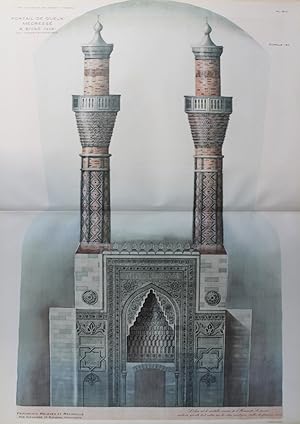

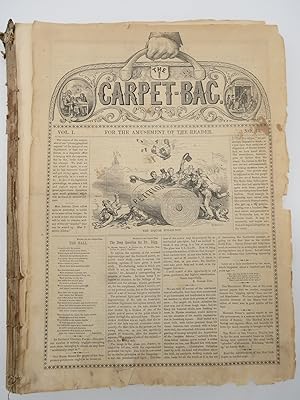
![Seller image for Klædedragter i Kjøbenhavn. 6 Hæfter (six issues). - [THE COSTUMES OF COPENHAGEN] for sale by Lynge & Søn ILAB-ABF](https://pictures.abebooks.com/inventory/md/md31373530807.jpg)
![Seller image for Reise igiennem Island. Foranstaltet af Videnskabernes Sælskab i Kiøbenhavn, og beskreven af forbemeldte Eggert Olafsen, med dertil hørende Kobberstøkker og et nyt forfærdiget Kart over island. 2 vols. - [EXCELLENT COPY OF OLAFSEN'S FOUNDATIONAL WORK ON ICELAND] for sale by Lynge & Søn ILAB-ABF](https://pictures.abebooks.com/inventory/md/md31447341301.jpg)
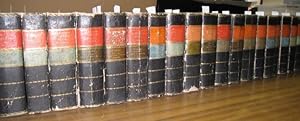
![Seller image for Loris Gréaud - [I] THE STATEMENT --------- [ Collection Une rêverie émanée de mes loisirs , LIVRE XXI ] for sale by Okmhistoire](https://pictures.abebooks.com/inventory/md/md16773339284.jpg)
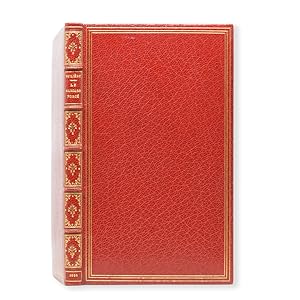
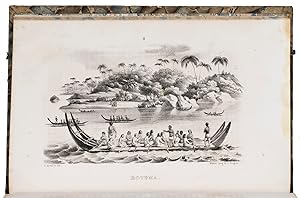
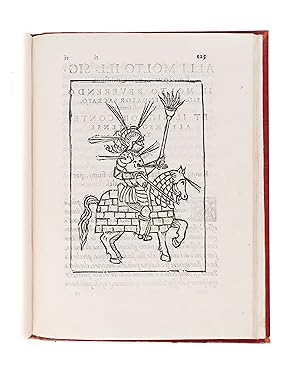
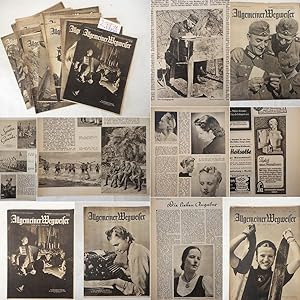
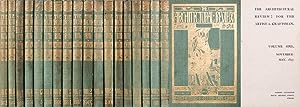
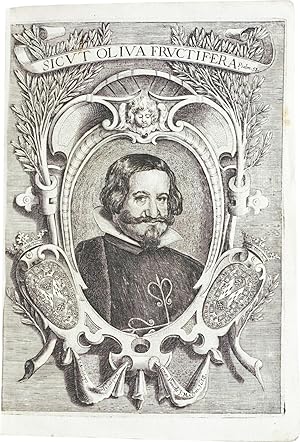
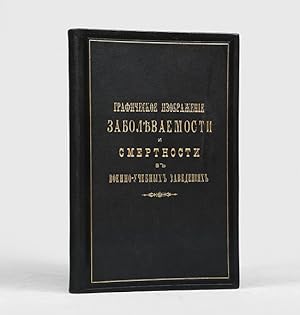
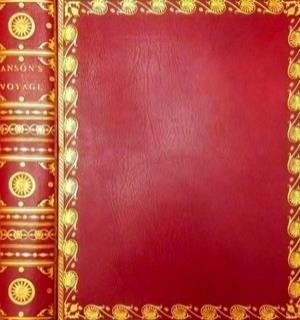
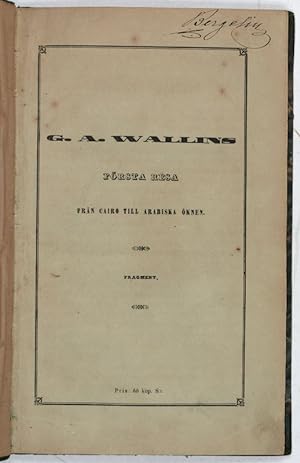
![Seller image for Libro [.] del modo di conoscere i buoni falconi, astori, e sparavieri, di farli, di governarli, & medicarli [.]. for sale by Antiquariat INLIBRIS Gilhofer Nfg. GmbH](https://pictures.abebooks.com/inventory/md/md22744513374.jpg)
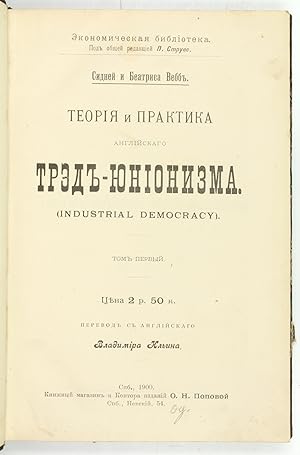
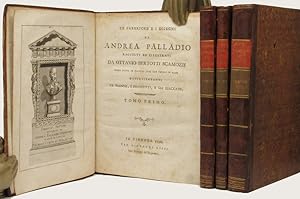
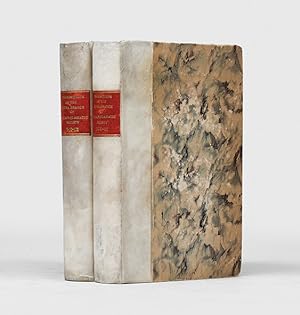
![Seller image for Principles of Economics. Vol. I [all published]. for sale by Peter Harrington. ABA/ ILAB.](https://pictures.abebooks.com/inventory/md/md31565864940.jpg)
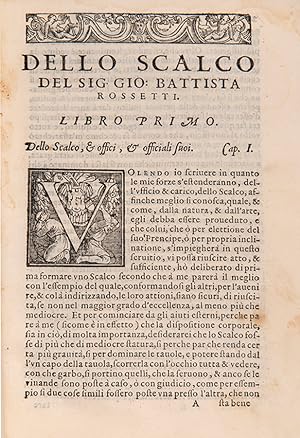
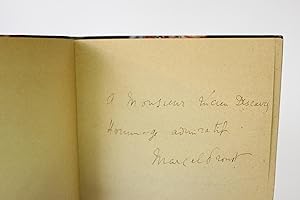

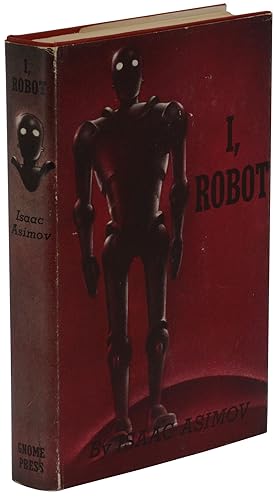
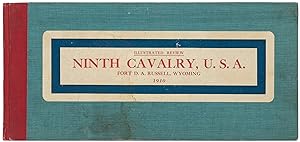
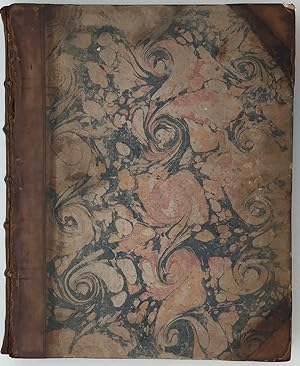

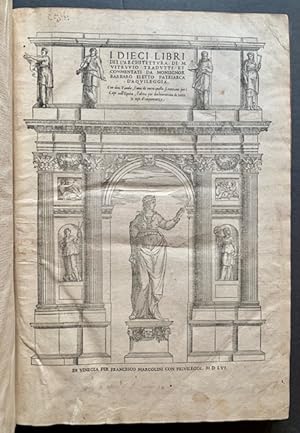
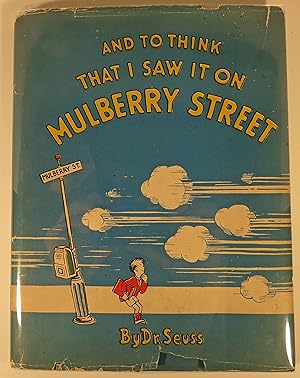
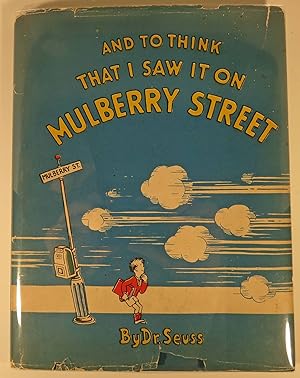
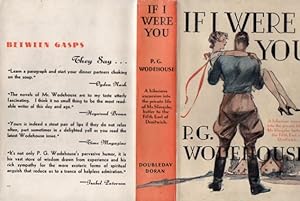
![Seller image for [THE FIRST EDITION OF TURGENEV'S FATHERS AND SONS] Otsy i deti [i.e. Fathers and Sons] for sale by Bookvica](https://pictures.abebooks.com/inventory/md/md31162632965.jpg)
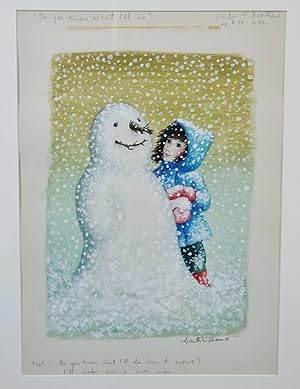
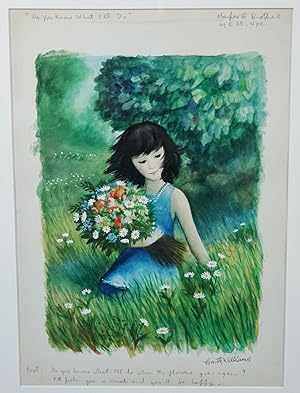
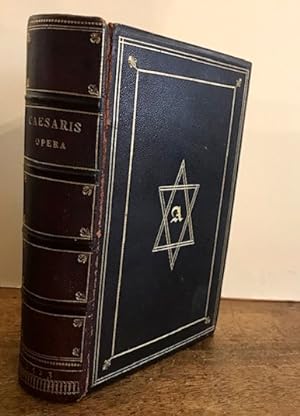
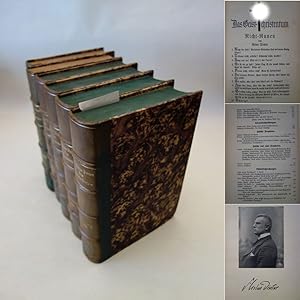


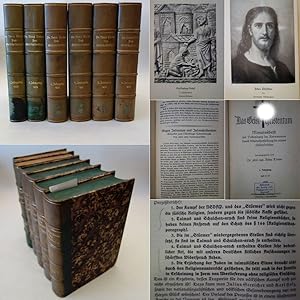

![Seller image for HISTORY OF BRITISH BIRDS. [with] A SUPPLEMENT TO THE HISTORY OF BRITISH BIRDS, PARTS I AND II for sale by Phillip J. Pirages Rare Books (ABAA)](https://pictures.abebooks.com/inventory/md/md31336462723.jpg)
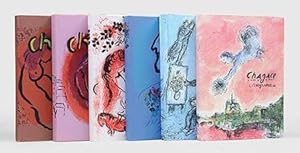
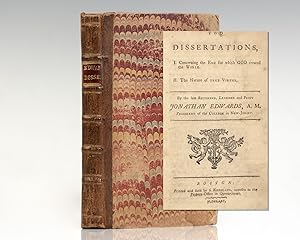
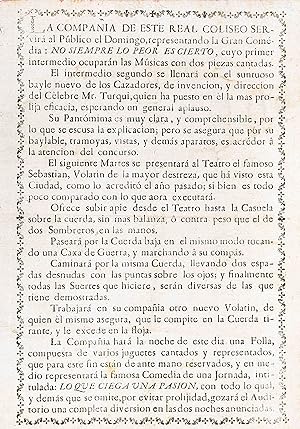
![Seller image for Musurgia Universalis sive ars magna consoni et dissoni in X libros digesta. Qua universa sonorum doctrina, et philosophia, musicaeque. aperiuntur et demonstrantur. Tomus I [-II qui continet. musicam mirificam. magiam consoni et dissoni. harmoniam mundi] for sale by J & J LUBRANO MUSIC ANTIQUARIANS LLC](https://pictures.abebooks.com/inventory/md/md31550523034.jpg)